For this month's Cinemascope, things get a little unusual. The horror scene is nothing special, even with Vincent Price starring, but you must dig the filmed play that George reviews below!
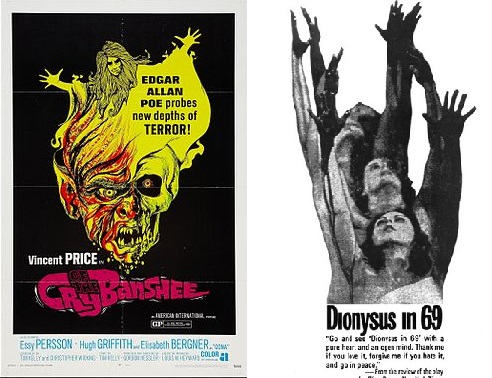
For this month's Cinemascope, things get a little unusual. The horror scene is nothing special, even with Vincent Price starring, but you must dig the filmed play that George reviews below!


by Fiona Moore
An Evening of Edgar Allan Poe
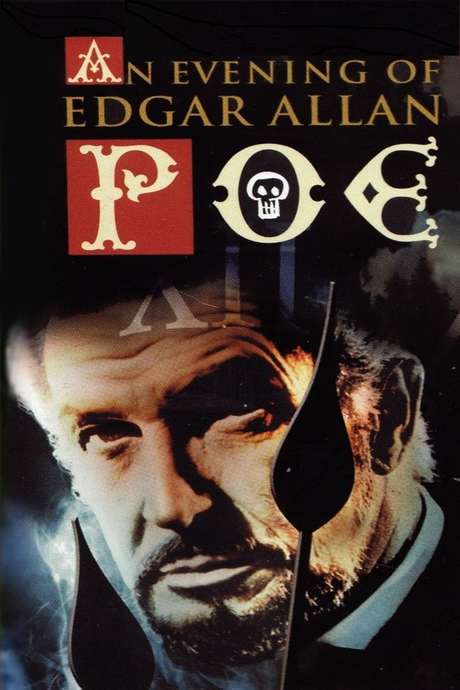 Theatrical poster for An Evening of Edgar Allan Poe
Theatrical poster for An Evening of Edgar Allan Poe
An Evening of Edgar Allan Poe is an hour-long film in which four Edgar Allan Poe stories are recited by Vincent Price. Originally made as a television play (and in a way which suggests it was based on a theatrical production, albeit with the addition of some new visual effects), it’s reminiscent of the BBC’s A Ghost Story For Christmas segment, and I was recently asked to view it as a possible acquisition as a teaching tool by my university’s English Literature department.
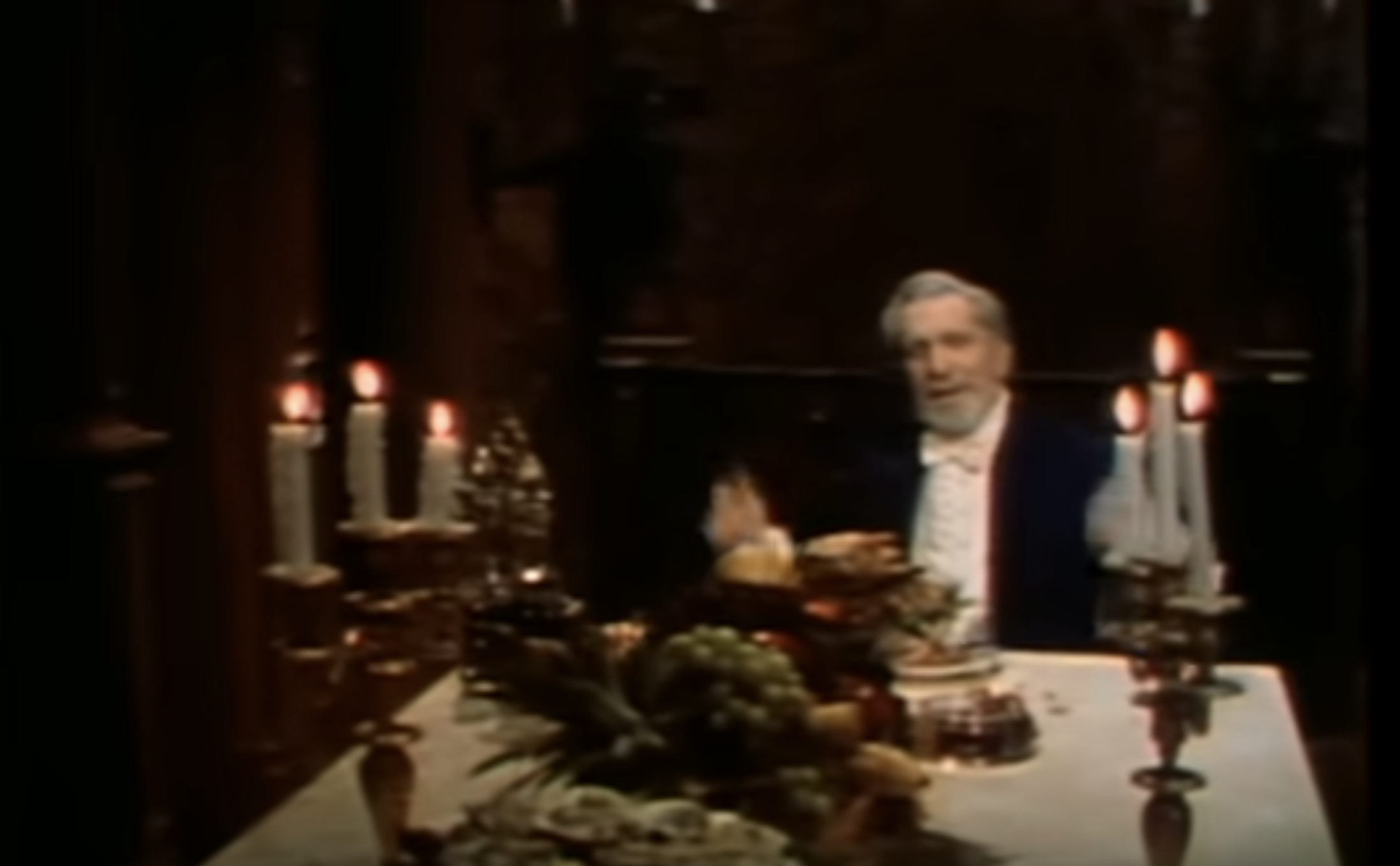
The Cask of Amontillado
The programme is split into four segments, in each of which Price recites a different Poe short story. Fairly predictably, these are “The Tell-Tale Heart”, “The Sphinx”, “The Cask of Amontillado” and “The Pit and the Pendulum”. Each segment is performed with Price in character as the narrator of each story, with appropriate costuming and sets. Although Price does show a decent range in playing different characters, they’re all very much within Price’s repertoire as an actor, so, although none of the performances are bad, there are no real surprises to be had here.
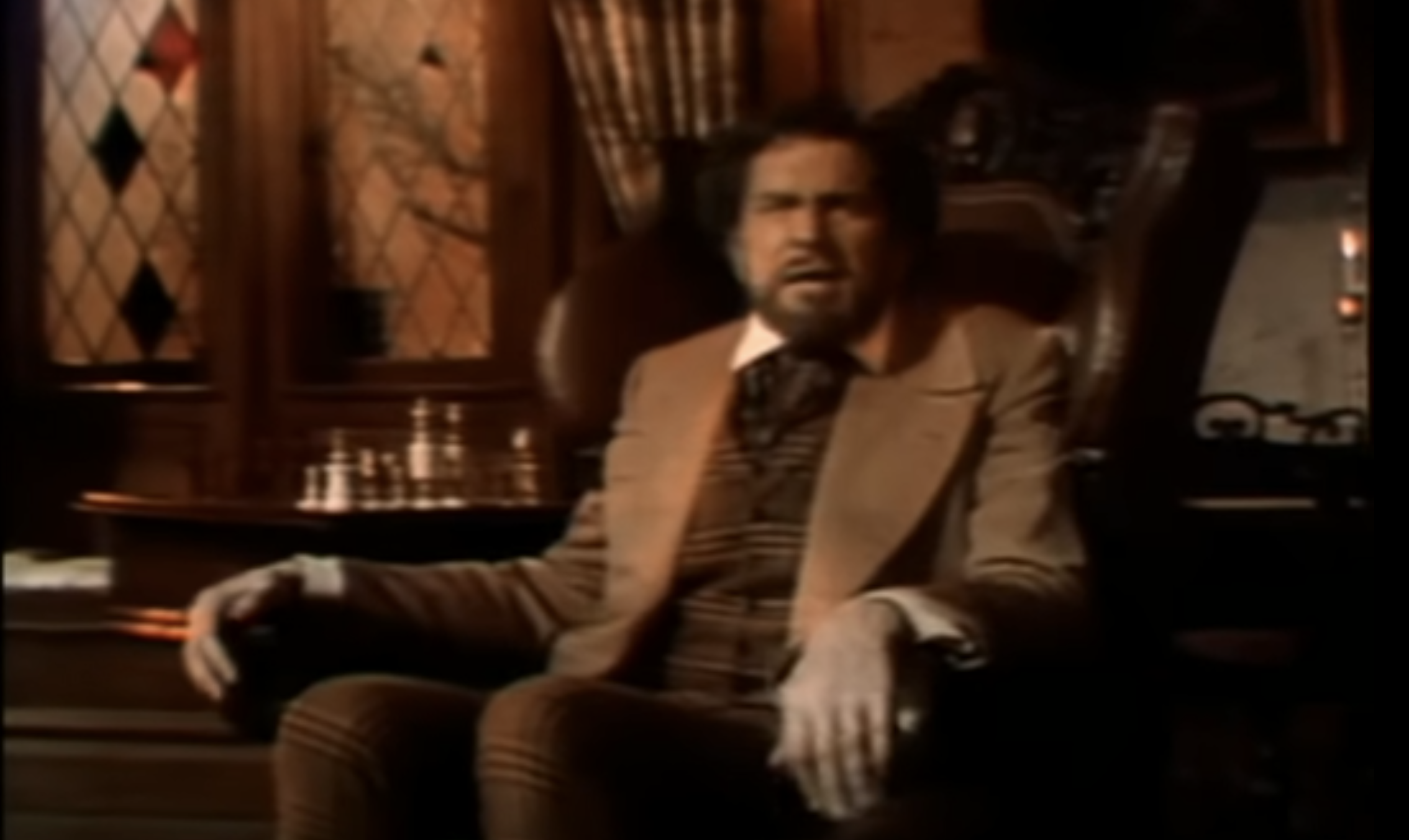 The Sphinx
The Sphinx
I felt the best segment was “The Cask of Amontillado”. Price really seems to relish the role of Montressor and plays him with a wicked twinkle in his eye, surrounded by luxurious draperies and furniture and a banquet-table of food. The weakest for me was “The Sphinx,” which struggled to hold my attention, though it did have an effective use of special effects when we briefly see a skull overlaid over Price’s face at a crucial moment.
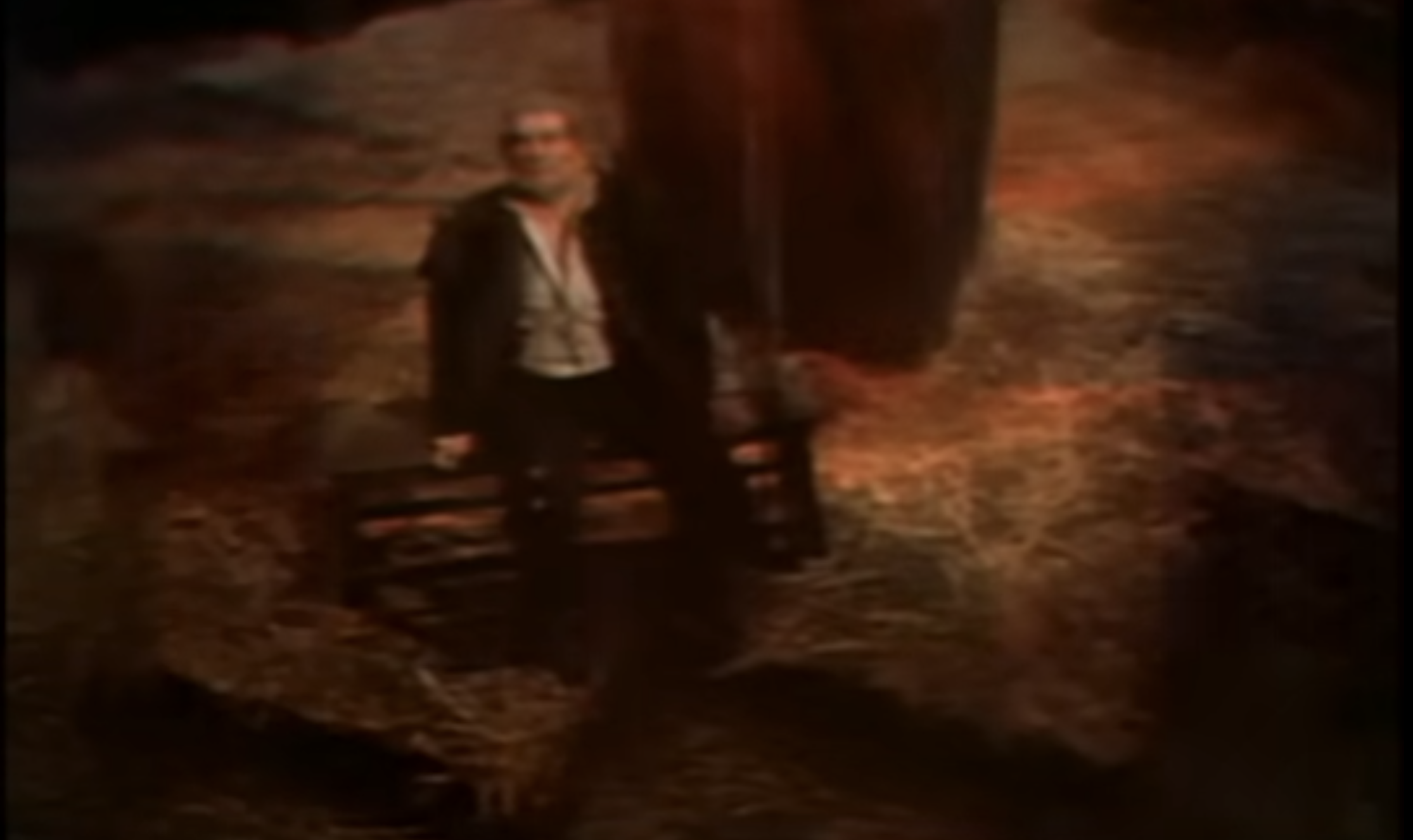 The Pit and the Pendulum
The Pit and the Pendulum
By contrast, “The Pit and the Pendulum” was a good enough dramatization of an exciting story, but the problem was that the producer seemed to feel it needed jazzing up with effects shots of Price falling into the pit, Price helpless before the pendulum, Price faced with colour separation overlay ("chroma-key" to yanks) flames, and so forth. The rats were far too cute, with inquisitive little faces and glossy fur, for me to find them horrific.
Finally, “The Tell-Tale Heart” was a good choice as the opening story, told simply with the set a bare garret, with Price steadily ramping up the hysteria as the narrator follows his path into murder and madness.
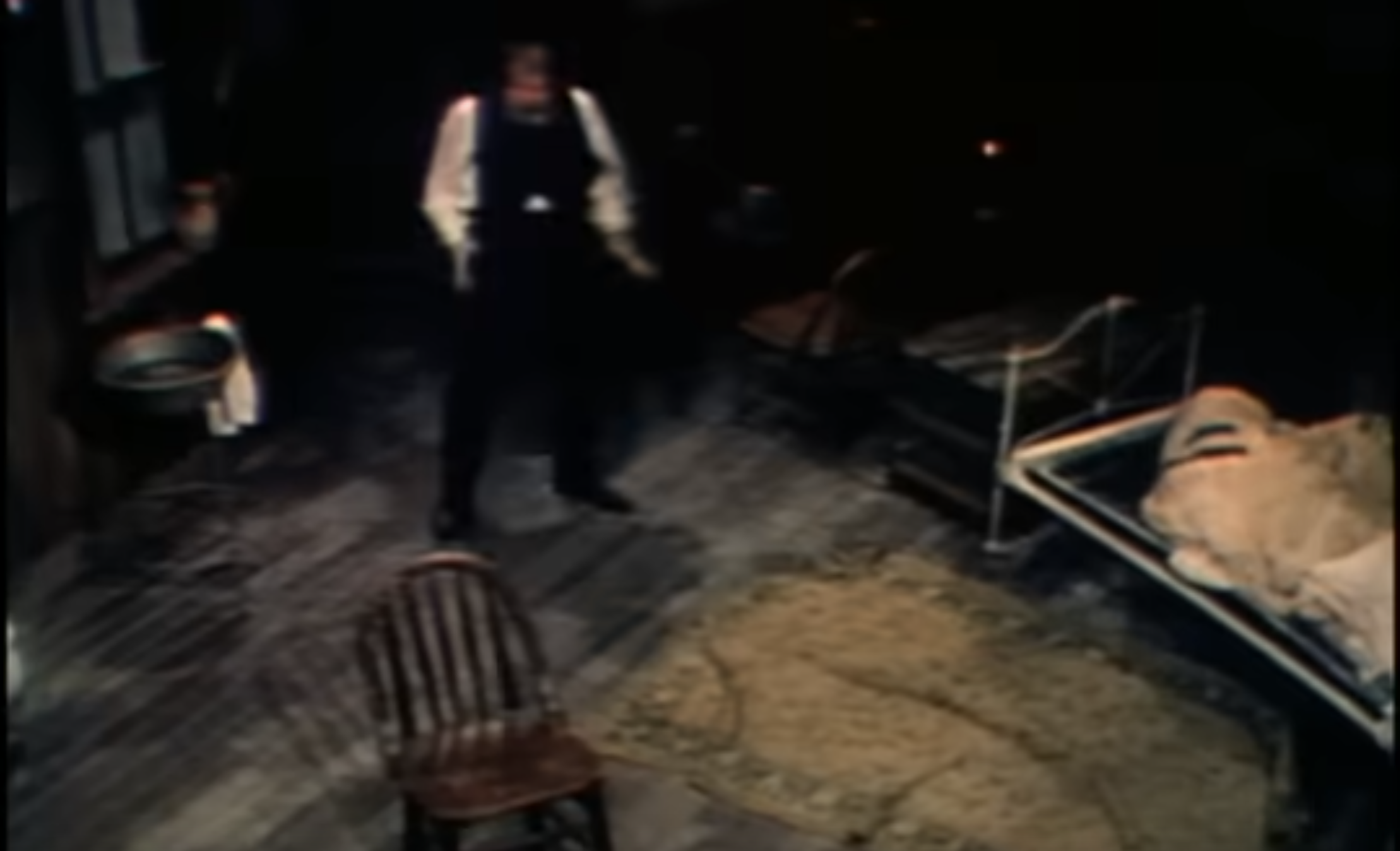 The Tell-Tale Heart
The Tell-Tale Heart
One great benefit I can see from this production is a chance to show audiences who may just know Poe from the cinematic productions loosely based on his work, just how skilled a horror writer Poe was in real life. The issue with something like “The Pit and the Pendulum” is that one can’t really get an entire 90-minute film out of it without adding a lot of material, which, while it can work as a movie, means you lose the terrifying economy of the original story (although if anyone wants to adapt “The Cask of Amontillado”, I think one could spend at least 90 minutes exploring the buildup of resentment in the two characters’ relationships that led up to the final murder). For this reason, I’m recommending that the English Literature department acquires a copy, and would also say that, if it turns up on TV in your region, it’s worth a watch.
3 out of 5 stars.
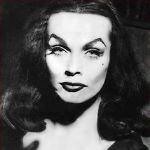
by Victoria Silverwolf
There's A Signpost Up Ahead . . .
Two films I caught recently reminded me of Rod Serling's late, lamented television series Twilight Zone. Let's take a look.
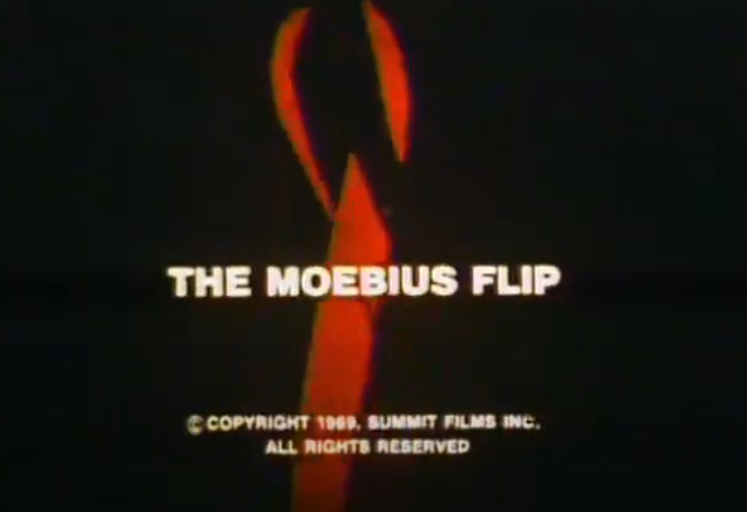
Less than half an hour long, this skiing film is the sort of thing that might be shown at a college campus, before the main feature in a movie theater, or to fill up time on television in the wee hours of the morning. The brief running time isn't the only thing that reminds me of Serling's creation.
We begin with scenes of people skiing, edited in a jumpy way. Jazz, rock, and folk music fill up the soundtrack. The skiers also fool around in the snow, eat some fruit, and so forth.
Suddenly, we see a news announcer. He tells us that scientists have determined that every subatomic particle in the universe has reversed polarity. I'm not sure what that means, but let's see what happens.
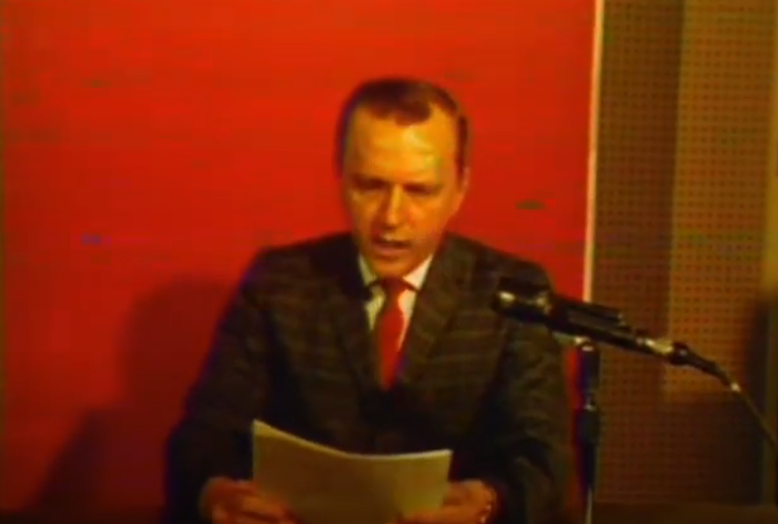
Somehow, this is supposed to change the way people perceive things. That means the film turns into a negative of itself.
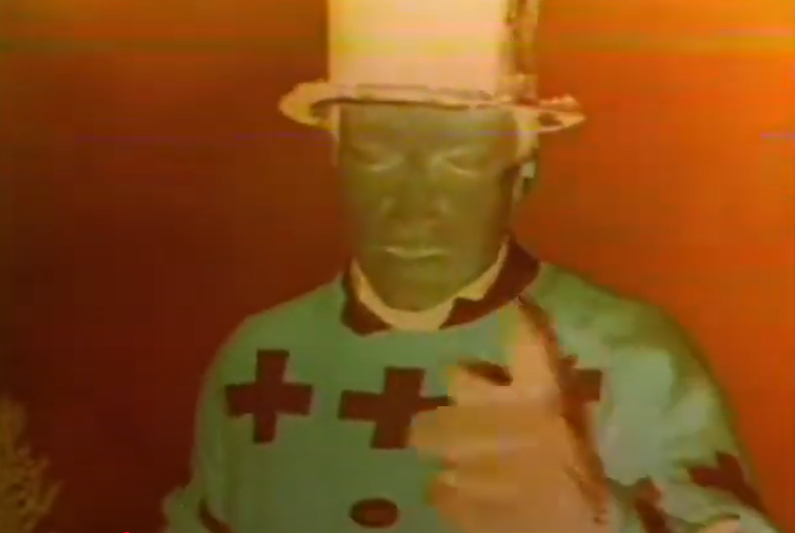
This goes on for a while, then the movie goes back to normal. Once in a while, it turns back into a negative. I guess that's a Moebius Flip. Along with more skiing, we get folks at an amusement park and eating in a restaurant. This part of the film features some pretty impressive and scary scenes of dangerous winter sports. People ski over huge crevasses, wind up on top of a tower of snow, and hang from cliffs.
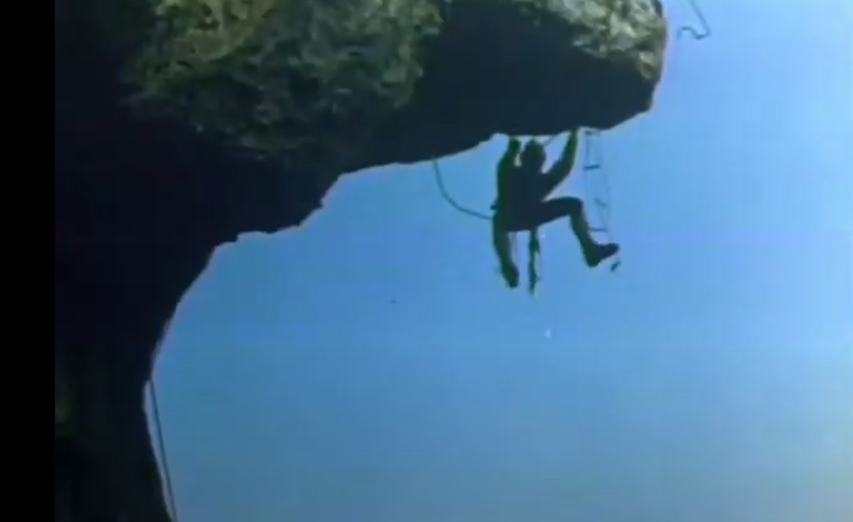
Is it worth twenty-odd minutes of your time? Well, if you like psychedelic images or are a big fan of skiing, it could be. The science fiction premise is just an excuse to reverse the colors of the film, and there's no real plot at all. I've never been on a pair of skis, so I can only appreciate the athleticism on display here as an outsider.
Two stars.
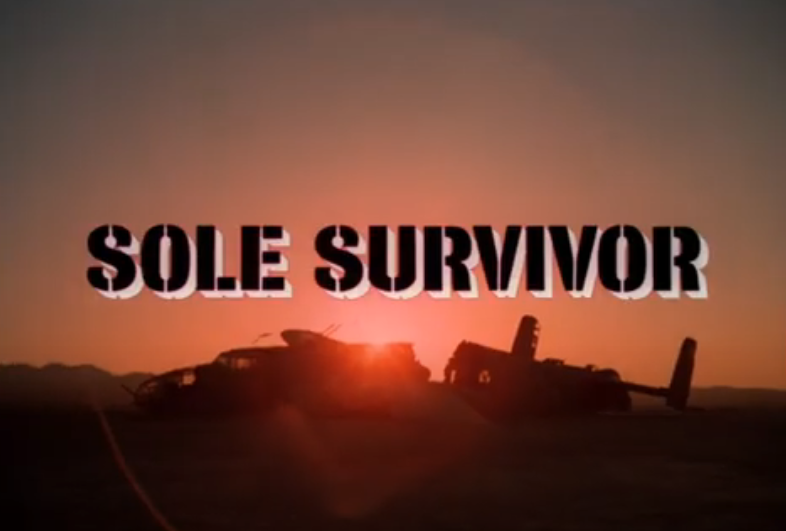
This is a made-for-TV movie that aired on CBS stations in the USA earlier this month. It begins with five men in World War Two uniforms standing around a wrecked American bomber of the time. They seem to be in pretty good shape, given that they're in a desert wasteland. Things get weird when we find out they've been waiting to be rescued for seventeen years.
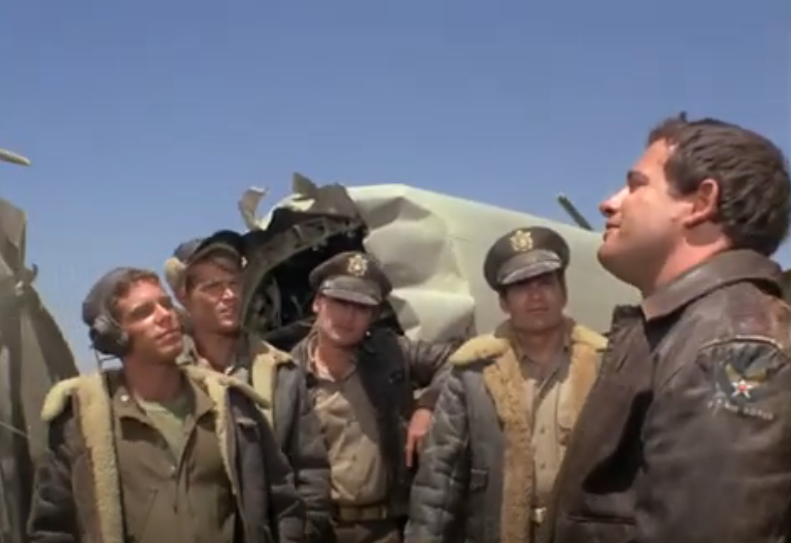
The crew of the Home Run.
It quickly becomes clear that they are ghosts, waiting for their bodies to be found so they can stop haunting the wreck.
I should note here that the premise is inspired by the case of the Lady Be Good, a bomber that crashed in the Libyan desert in 1943 and was not discovered until 1958.

The real wreck.
Fans of Twilight Zone will remember the episode King Nine Will Not Return, which was also inspired by the fate of the Lady Be Good. That tale goes in a different direction, however.
Two men in an airplane discover the wreck. (By the way, the fact that the ghosts have been waiting for seventeen years means that the movie takes place in 1960 or so. There's no other indication that it's set a decade ago.)
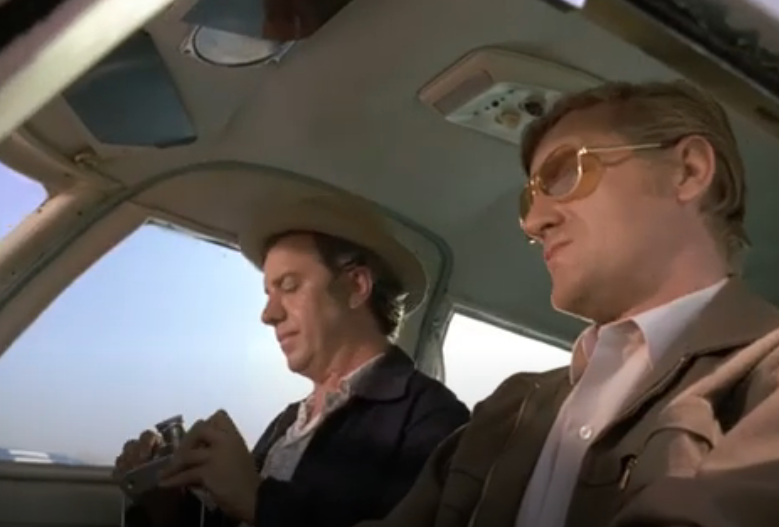
The discoverers, who look more 1970 to me.
This leads to an official investigation by the United States Army. (Remember that the Air Force was part of the Army, and not a separate branch of the service, until a few years after World War Two.) Two officers are in charge of the mission.

William Shatner, fresh from Star Trek, as Lieutenant Colonel Josef Gronke and Vince Edwards, best known as Ben Casey, as Major Michael Devlin.
They pay a visit to the sole survivor of the Home Run. This fellow parachuted out of the plane and landed in the Mediterranean Sea, managing to make it out alive to continue his military career. (More details of what happened later.)
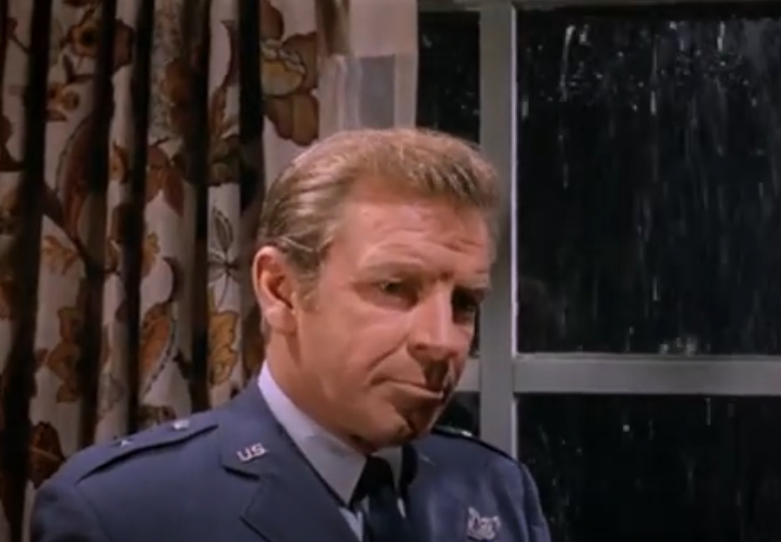
Brigadier General Russell Hamner, as played by Richard Basehart, recently the star of the TV series Voyage to the Bottom of the Sea.
Hamner agrees to accompany the two officers to the North African desert. He claims that all of the crew of the Home Run bailed out into the ocean, so the plane must have continued without them for several hundred miles before it crashed. Unlikely, but possible. Flashbacks tell us the real story.

Hamner as the navigator of the Home Run during the war.
The bomber was damaged in an attack by the enemy. The captain ordered Hamner to plot a course back to base, but he panicked and bailed out against orders. Without a navigator, the crew went off course and the plane crashed.
Tension builds as Devlin casts doubt on Hamner's story, and Gronke tells him not to make waves, lest he ruin his career. Both officers have their own concerns about their pasts, adding depth of character. Without giving too much away, let's just say that the truth comes out because of a harmonica, a rubber raft, and Hamner's guilty conscience. There's a powerful and poignant conclusion.

The last ghost faces an eternity playing baseball alone.
This is quite a good movie, particularly for one made for TV. I like the fact that the ghosts appear as ordinary men, rather than being transparent or something. The actors all do a good job. You'll never hear the song Take Me Out To The Ball Game again without having an eerie feeling.
Four stars.
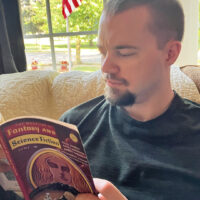
Over the past several years, AIP has adapted stories by H. P. Lovecraft for the big screen—or at least the drive-in. The results have been mixed, but they could certainly be much worse. The first and still the best of these was The Haunted Palace (adapted from The Case of Charles Dexter Ward) back in '63, directed by Roger Corman, with a script by the late Charles Beaumont, and starring an especially tormented Vincent Price. It was a very fine picture. Now we have the latest entry in this "series," The Dunwich Horror, taken from the Lovecraft story of the same name, although it's a pretty loose adaptation.
The Dunwich Horror
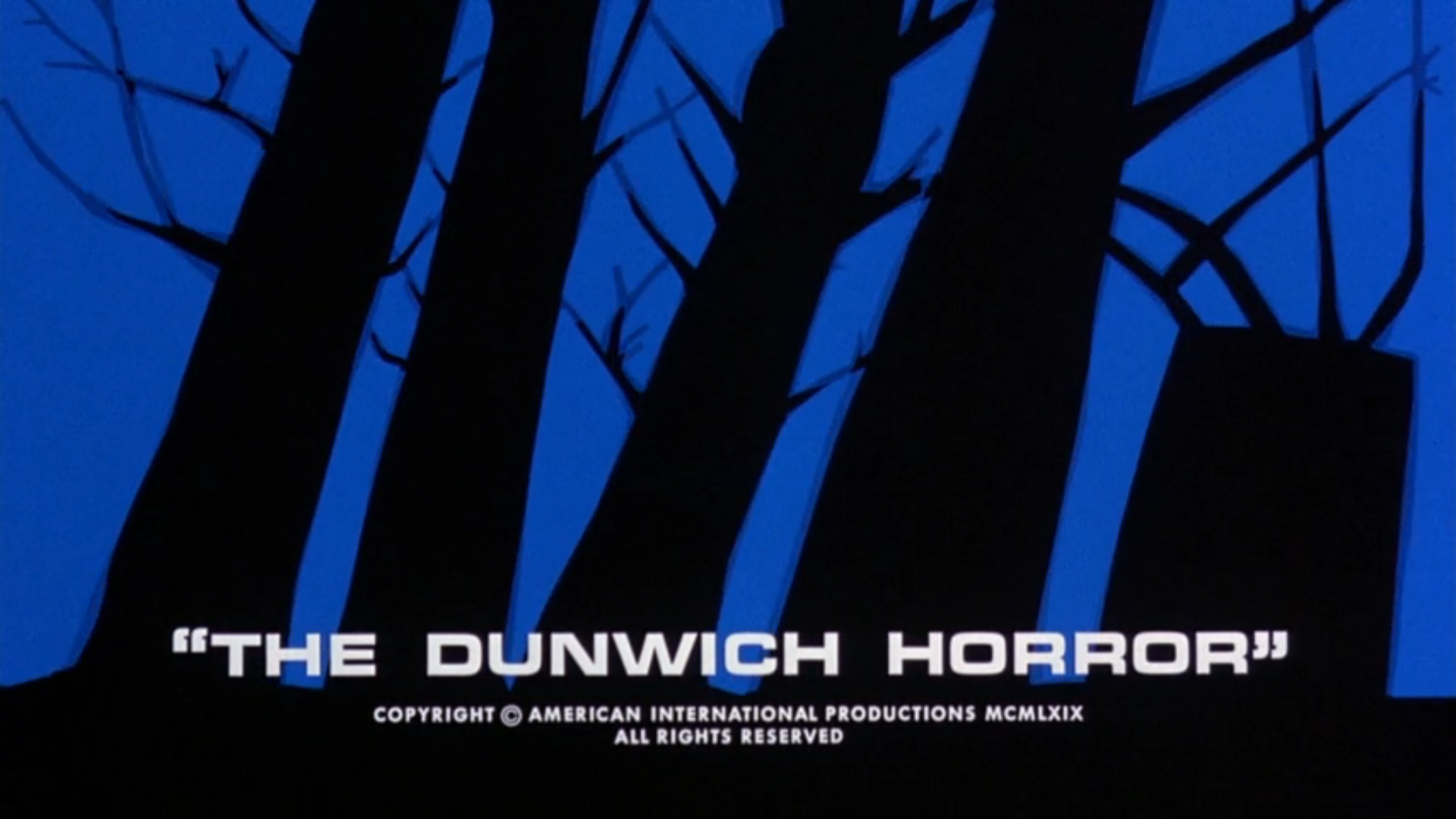
One warning I want to give about this movie, one which has nothing to do with sex or violence, is that, aside from being generally a pretty strange film, there are several scenes featuring flashing lights, or a color filter changing rapidly to give one the impression of a strobing light. Some people (thankfully not many) are susceptible to epileptic fits if subjected to such stimuli.
Now, as for the film itself, once we get past what I was surprised to find is an animated (as in a cartoon) opening credits sequence, we start with what seems to be a flashback of a woman giving birth, surrounded by two elderly sisters and an old man. We then flash forward to Miskatonic University, that college of the occult and Lovecraft's making, in Arkham. Nancy Wagner (Sandra Dee) is a student who, in the college's library, meets a good-looking but unusual young man named Wilbur Whateley (Dean Stockwell), who is terribly interested in the Necronomicon. I'm sure his interest in the accursed book and his strange deadpan way of talking are perfectly innocuous. A certain professor at Miskatonic, Henry Armitage (Ed Begley), gets a bit of a hunch that Wilbur is up to no good, but for now does nothing about it.
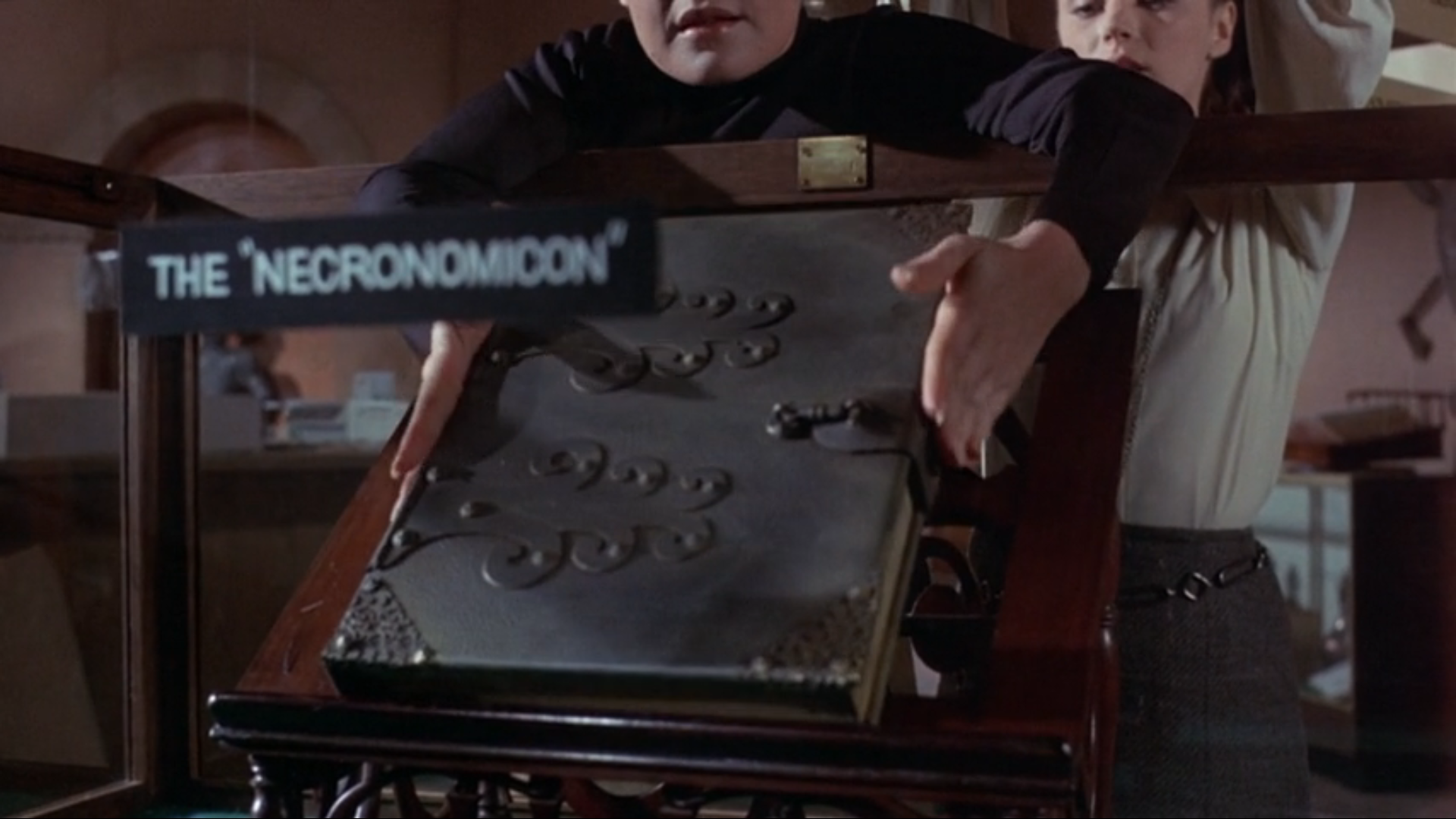
"The Dunwich Horror" is one of Lovecraft's most celebrated stories, but it's also one of his trickiest. As with "the Call of Cthulhu," Lovecraft wrote "The Dunwich Horror" as if it were a report or an essay, a work of journalism or academia, rather than a fiction narrative. There's no protagonist, properly speaking, although Wilbur is certainly the story's nucleus. This remains sort of the case with the film, although Nancy and Armitage now serve as our eyes and ears, or rather as normal people in what becomes an extraordinary situation. However, it's not Sandra Dee or Ed Begley who caught my attention, but Dean Stockwell as Wilbur, who gives almost what could be considered a star-making role (to my knowledge his most high-profile roles up to now were film adaptations of Sons and Lovers and Long Day's Journey into Night), if not for the movie that surrounds him. Unlike his short story counterpart Wilbur here is not physically deformed, but instead talks in a strangely deadened tone, as if human emotions are foreign to him. Stockwell as Wilbur manages to be uncanny simply through how he talks and acts, which is a major point of praise.
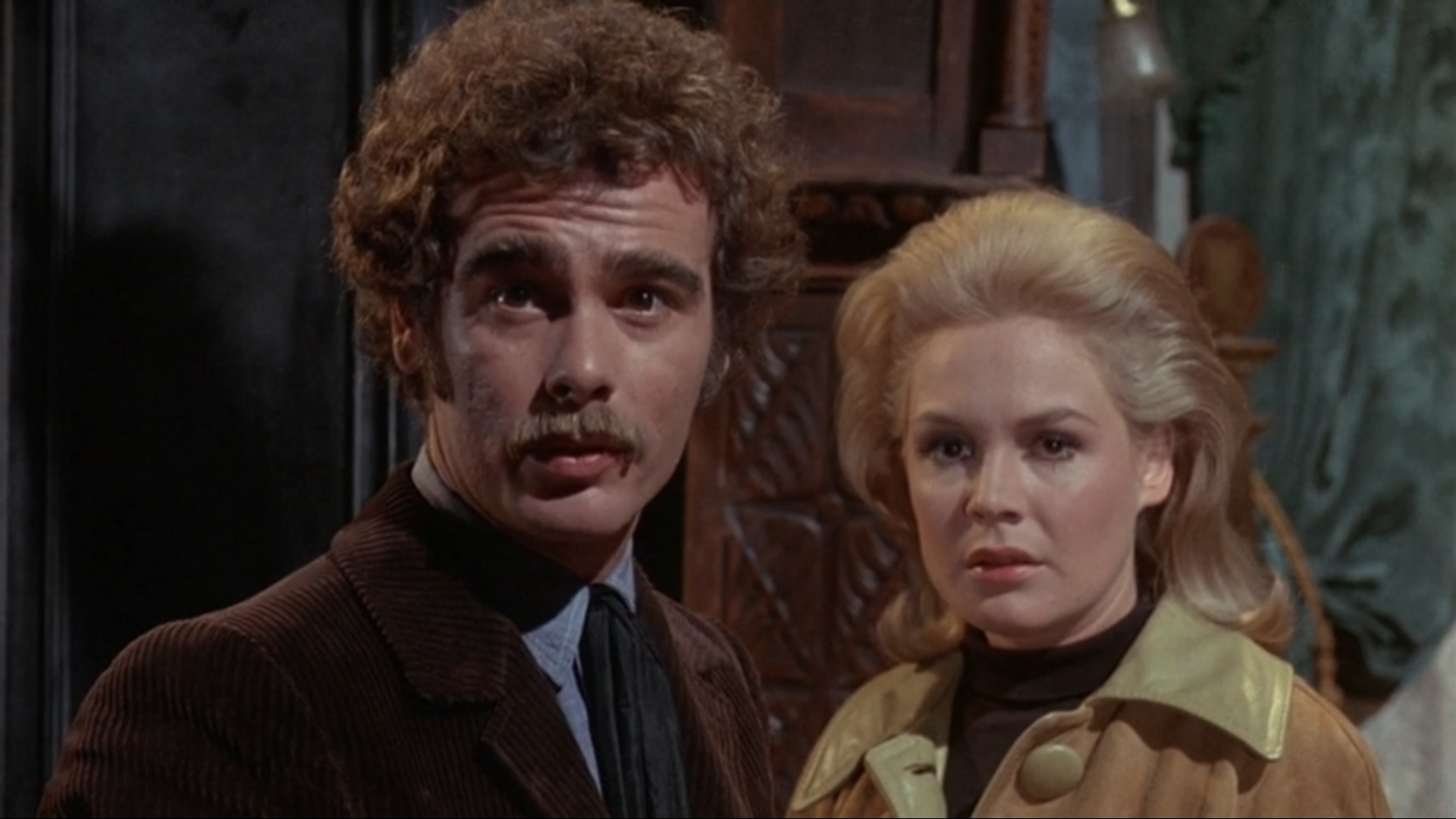
Director Daniel Haller and his team of screenwriters have opted to streamline Lovecraft's story while giving it a sort of romance plot, as well as a dose of sex and violence. Sex and Lovecraft have always been uneasy bedfellows, even in something like "The Shadow Over Innsmouth" which explicitly involves sex in its plot. Wilbur is one of two twins, the other having supposedly died in childbirth, with the father being unknown, and his mother having been kept in an asylum for the past two decades. Wilbur lives with his grandfather, Old Man Whateley (Sam Jaffe, who some may recognize as that one scientist in the now-classic The Day the Earth Stood Still), who seems convinced his grandson is also up to no good, but arbitrarily (the film does nothing to explain this) does nothing about Wilbur being a scoundrel. For his part, Wilbur sees Nancy as a pretty fine girl—for a dark ritual, that is. The idea is that if he can steal the Necronomicon and impregnate Nancy (the implication, via a mind-bending scene, is that he rapes her), he can bring one of "the Old Ones" into the human world.
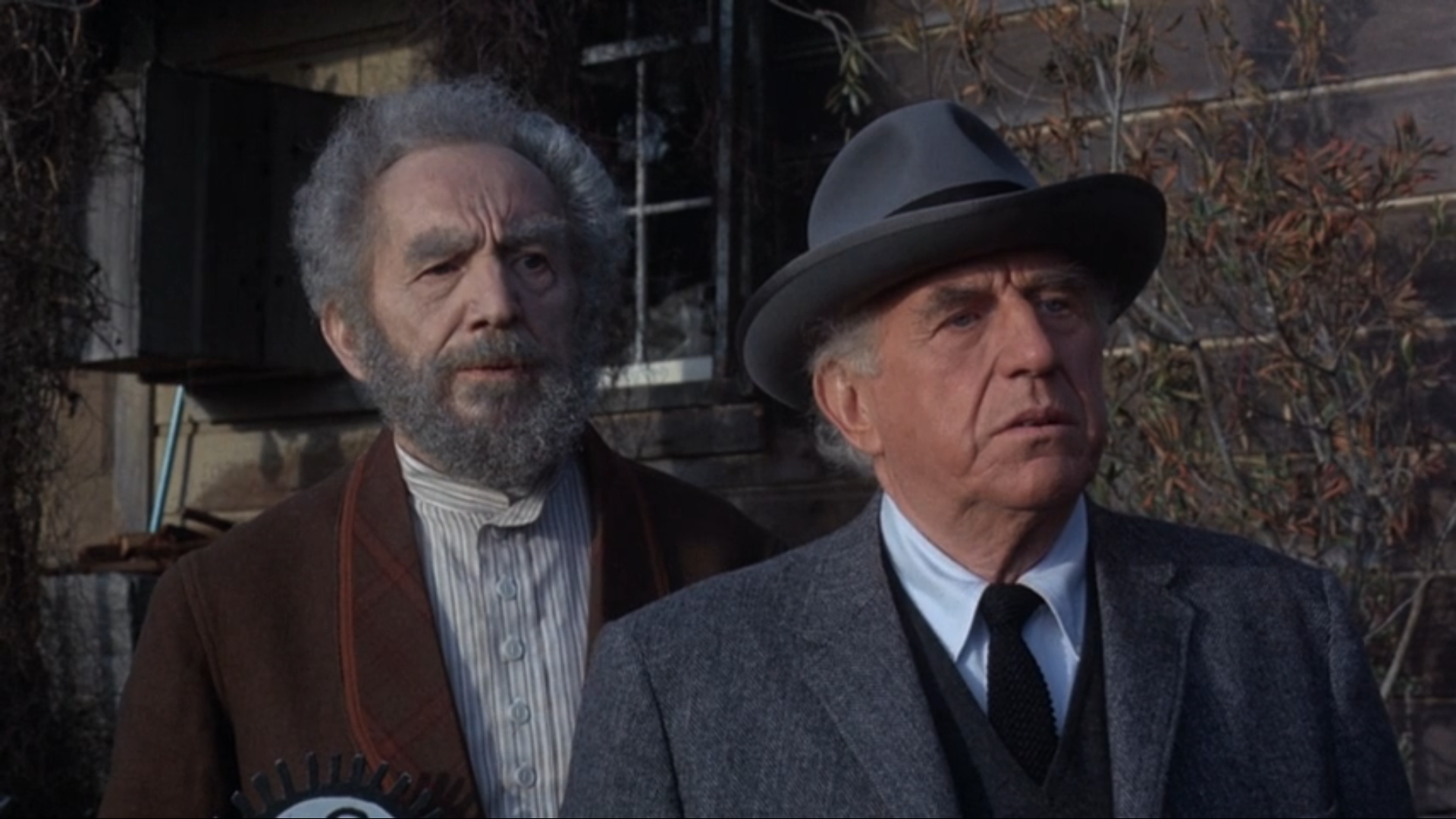
As this point the plot splits in two, with one half focusing on Wilbur and Nancy's "romance" while the other sees Armitage tracking down the mystery of Wilbur's birth, since it becomes apparent the young man and the Necronomicon are somehow connected. One of the strangest (sorry, "far-out") scenes in the whole movie is when Armitage goes to see Wilbur's mother (Joanne Moore Jordan), who apparently had lost her mind many years ago upon giving birth to Wilbur and his dead twin. When it comes to this movie, there are two types of strange: that of the unnerving sort, and that of the cheesy sort. There are parts (sometimes moments within a single scene) of this movie that do a good job of spooking the audience, and others where it's rather silly. With that said, the nightmarish effect of Jordan's performance combined with the changing color tints in this scene make it one of the most effective. This is a movie that generally shines brightest when it focuses on Stockwell's performance and/or the Gothic cliches (including a creepy old house) that clearly also influenced Lovecraft's writing. Maybe it's because they didn't have the budget for it, but the lack of an on-screen monster for the vast majority of the film's runtime also works in its favor.

When Old Man Whateley finally decides to take action, Wilbur kills him for his troubles, along with imprisoning one of Nancy's friends and turning her into some kind of abomination. Meanwhile Wilbur gives his grandfather a heathen burial and in so doing provokes the wrath of the Dunwich townspeople, who never liked the Whateleys anyway. It's revealed, or rather speculated, that Wilbur's twin may not have died after all, but instead gone to the realm of the Old Ones while Wilbur got stuck on Earth as a human. Armitage and the townsfolk succeed in stopping Wilbur from completing his ritual with the unconscious Nancy, Armitage being well-versed enough in the Necronomicon to use the book against Wilbur, killing him with a blast of lightning. So the last of the Whateley men is dead. Unfortunately, the final shot, eerily showing a fetus growing inside Nancy (which is odd, because she's probably only been pregnant a day or two), implying an Old One may be born after all.
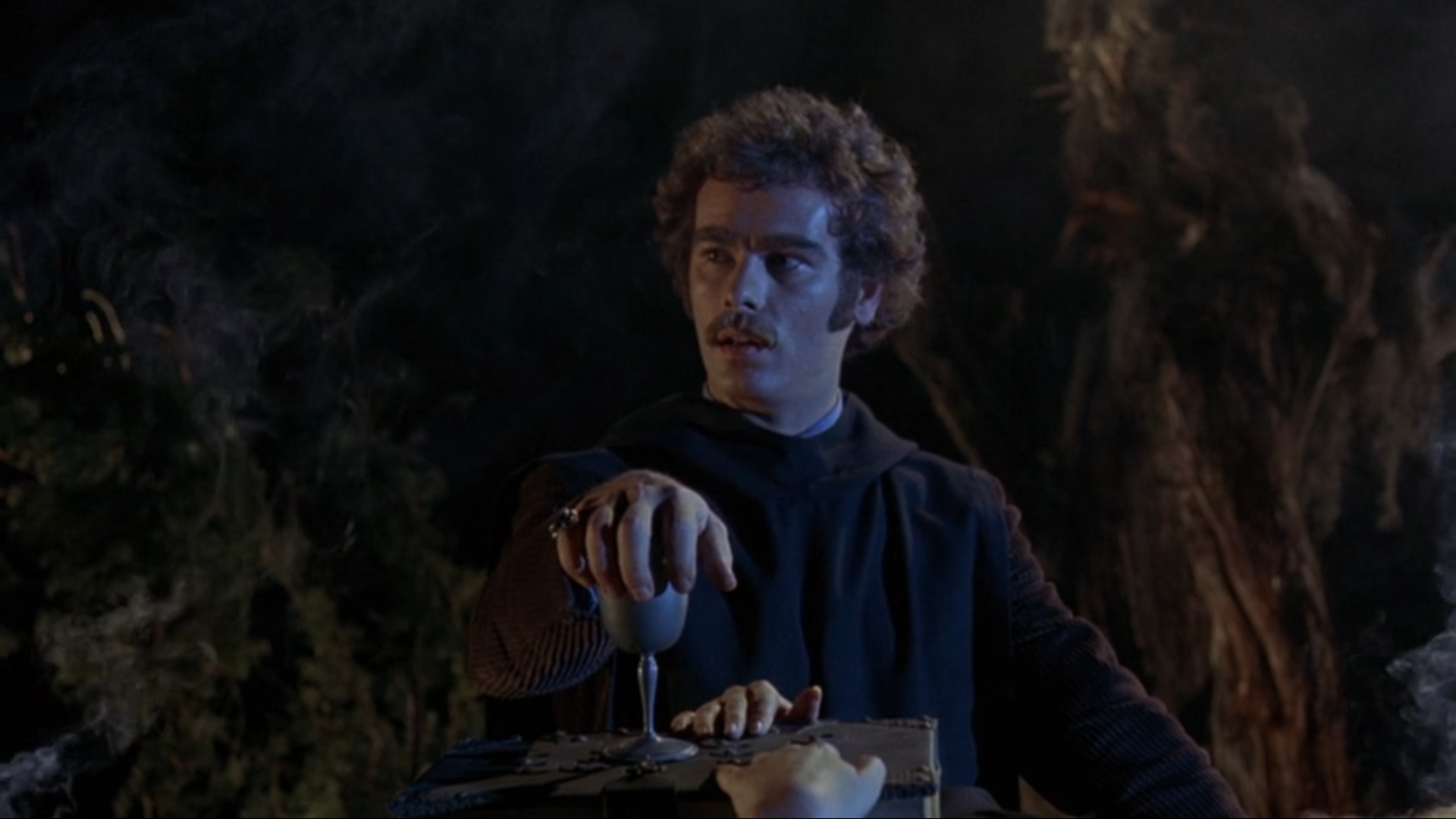
Lovecraft purists will surely be much disappointed with this movie, and even as someone who is not exactly a Lovecraft fan, I have to admit it's by no means perfect. Even at 90 minutes it feels a bit overlong, and it tries desperately to contort one of Lovecraft's more unconventional stories into having a three-act structure. I also get the impression that the addition of blood and breasts was to appease those (people my age and younger) who are suckers for AIP schlock. Not too long ago we had Roger Corman's so-called Poe cycle, which for the most part did Edgar Allan Poe's (and in one case Lovecraft's) fiction justice on modest budgets. I would say The Dunwich Horror is on par with one of the lesser of Corman's Poe movies.
A high three stars.
[New to the Journey? Read this for a brief introduction!

by Fiona Moore
Witchfinder General is a real game-changer not just for British horror but for horror films in general. This is a movie without monsters, ghosts, psychopathic killers or, even, witches (at least real ones). The terror comes from people’s belief in witches, and what that belief makes them do to other people, and, in making that change, this film is an artistic statement that transcends genre.
The story is set, as a clunky (and rather unnecessary, since the same information is conveyed in the first few scenes) voiceover at the start tells us, in 1645, the height of the English Civil War. It is ostensibly based on the life of a genuine historical figure of the time, Matthew Hopkins, the so-called “Witchfinder General”. He is a minor landowner who made his career travelling around Southeastern England identifying witches using bogus techniques and confessions extracted under duress. In fact, the story bears almost no resemblance at all to the known facts of Hopkins’ life, barring his name, that of his assistant Stearne (in real life their roles were reversed), the location (East Anglia) and the methods used to extract confessions from witches. This is a minor complaint, however—and might not even be a complaint, as the story the movie tells is possibly more disturbing than Hopkins’ actual biography.
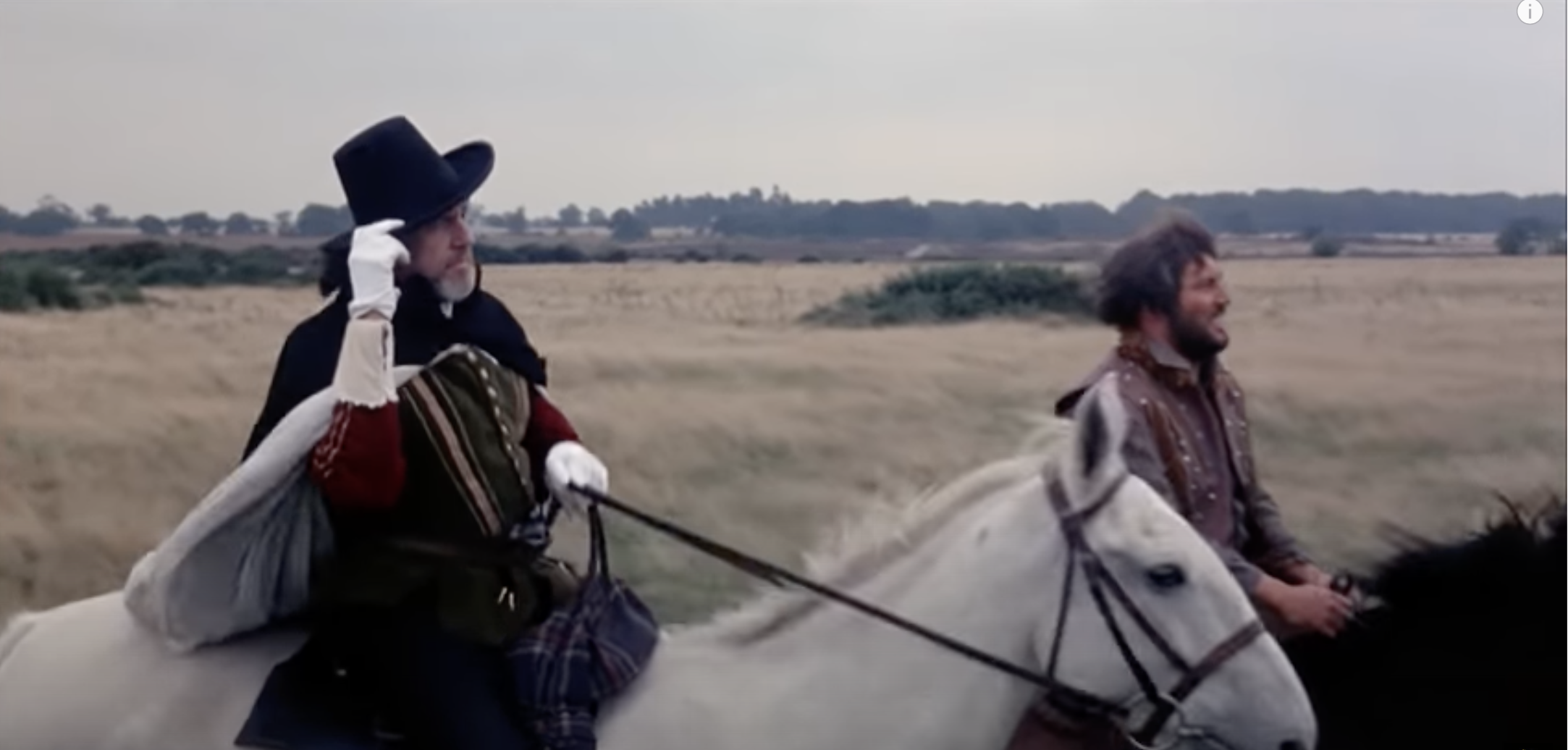
The film’s main positive figure, at least at the outset, is Richard Marshall, a young Roundhead soldier engaged to Sarah Lowes, the niece of a small-town Church of England priest. Sarah’s uncle is accused of witchcraft by his neighbours (we never learn the specific reason for this, which chillingly suggests that it’s a fairly banal local conflict that escalates to horrific extremes) and Hopkins and Stearne arrive, arrest and torture the accused. Sarah, desperate to save her uncle, sleeps with Hopkins; when Stearne, envious and sadistic, rapes her, Hopkins discards his promises to Sarah and has her uncle executed. Richard, hearing of the tragedy but arriving too late to stop it, marries Sarah and swears vengeance on Hopkins. Matters escalate, leading eventually to a bloody confrontation which clearly brings home that violence only begets more violence, and that no one in this story is going to escape without severe damage.

The civil war backdrop is sketched in matter-of-factly. Perhaps surprisingly, given that subsequent British popular culture tends to dislike the Parliamentarians (in Sellars and Yeatman’s phrase, the Cavaliers were Wrong but Wromantic, and the Roundheads Right but Repulsive), the film resists the temptation to lay the blame for the witch hysteria at Cromwell’s door. Richard and his men are more or less positively portrayed, as is Cromwell himself when he turns up for a brief cameo after a successful military campaign. Some of the film’s power arguably lies in the fact that they, and Hopkins, are all ostensibly on the same side, and, while we see very little of the atrocities of the war itself, it is clearly part of what is fueling the communities’ drive to turn on their own. The viewer is also left to fill in some details themselves: for instance, the absence of a lord of the manor in the village where Sarah and her uncle live suggests he was a Royalist, possibly also hinting at why relationships have broken down between the villagers and why Sarah’s uncle is now accused of heresy.
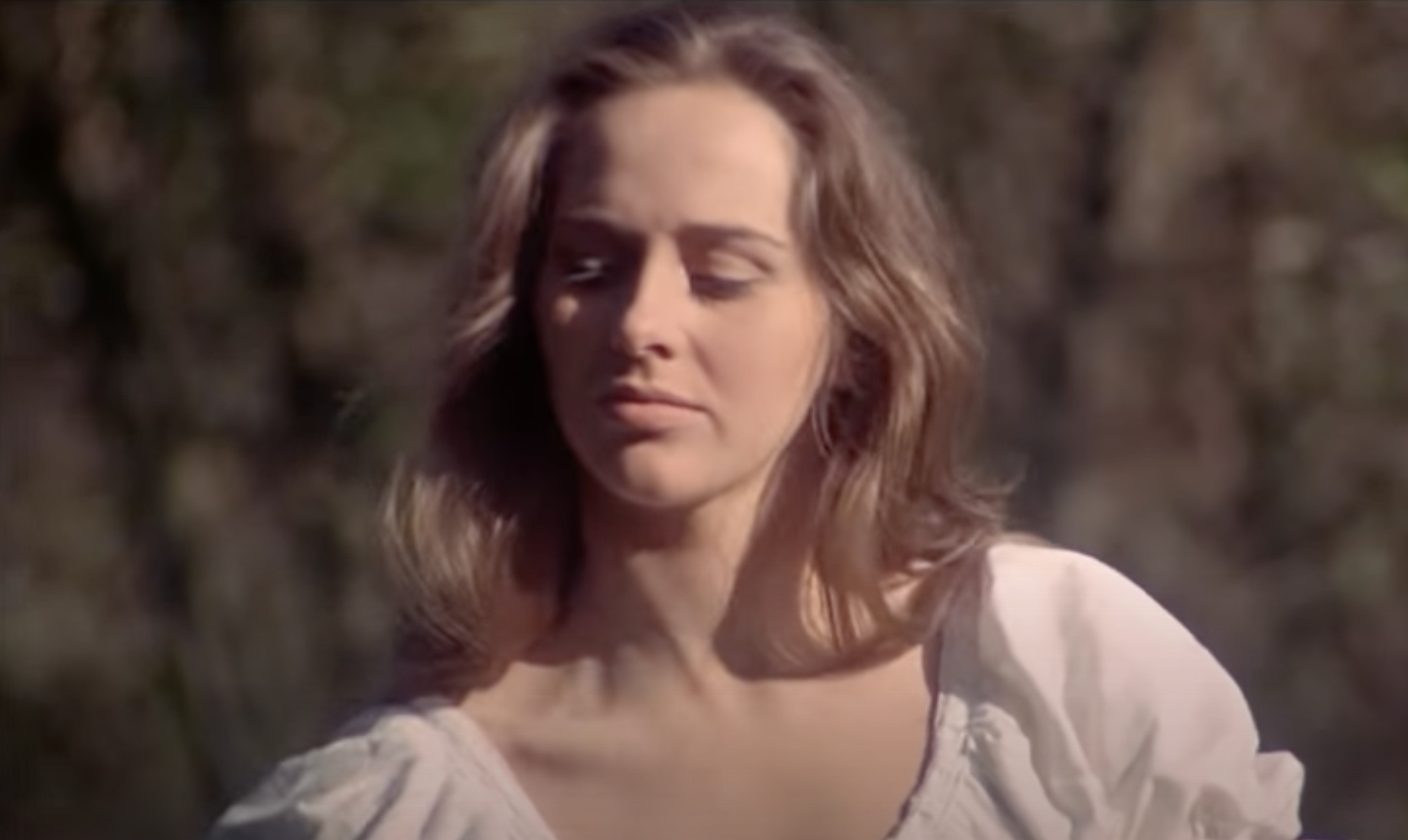
In casting terms, Vincent Price is credibly chilling as Hopkins, largely because of the way he underplays his role: he talks about torture and murder in the same banal tones as one might discuss a land boundary dispute, and he pretends hypocritically to be serving the public interest. Robert Russell as Sterne is a much more familiar figure from horror films, loathsome and sadistic, but provides a necessary contrast to Price, acting as a kind of expression of Hopkins’ id. Newcomers Ian Ogilvy and Hilary Dwyer, as Richard and Sarah, are very pretty to look at, but they also have the acting chops to handle their characters’ descent as they are subjected to increasing torment and degradation.

Michael Reeves’ direction works well, contrasting the beautiful scenery of Southeast England with the awful behaviour of its inhabitants. His best, albeit hardest to watch, efforts come in the film’s climactic scene. In it, Hopkins escalates his method of execution from simply hanging witches to burning them—not at the stake, but strapped to a ladder slowly lowered into the fire. As this takes place, the camera turns its pitiless gaze around the crowd, showing a variety of different reactions: from religious rapture, to horror, to fear, to pleasure. Most horrifyingly, it also shows children absorbing the violence around them. We later see the same children roasting baked potatoes in the execution fire, a detail that is terrifying in its matter-of-fact presentation.
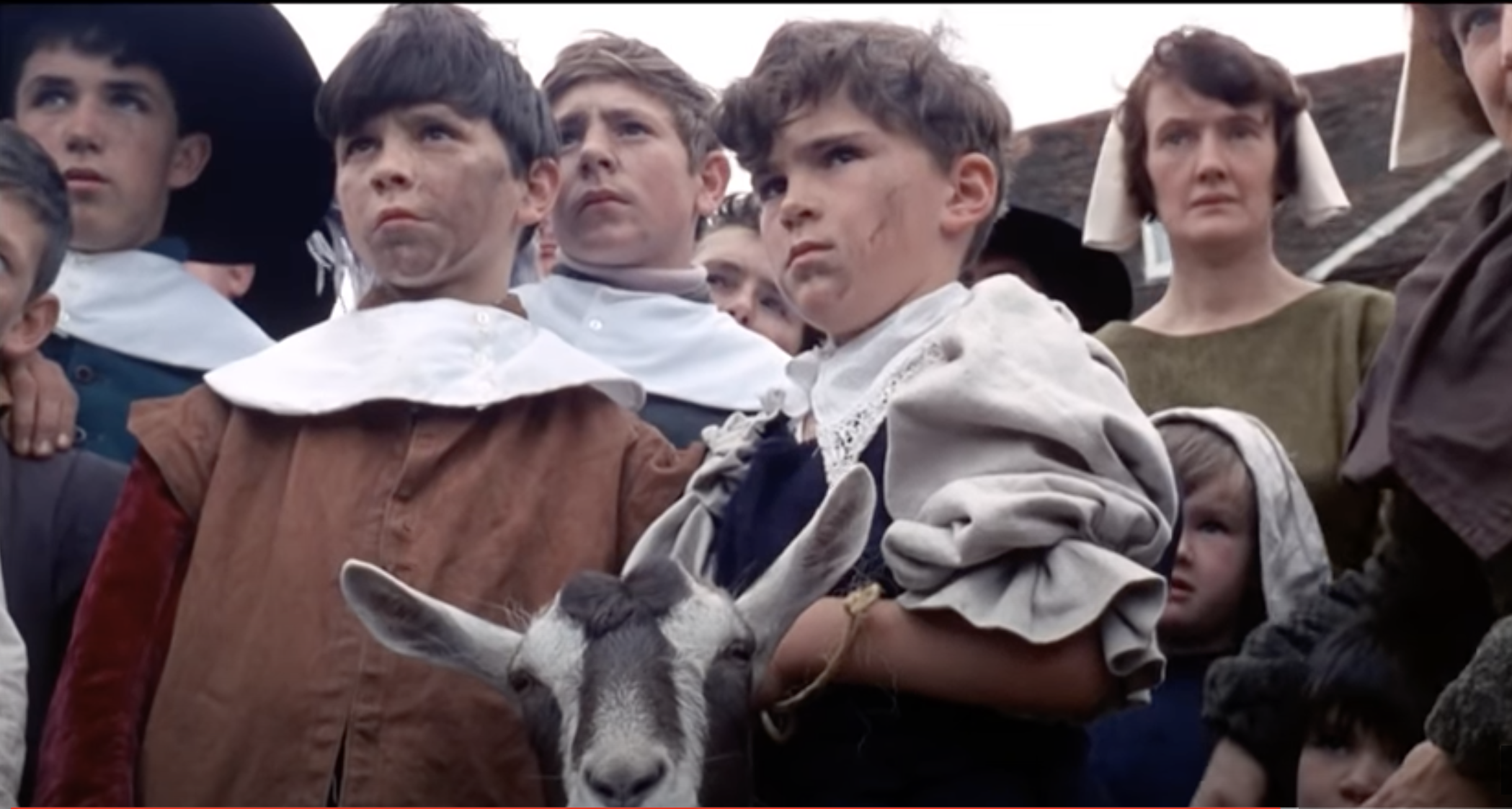
The story’s contemporary relevance is also clear. Sexism visibly fuels the witch-hunting activities, and prejudice against women and fear of their sexuality in the wider culture allows the likes of Hopkins and Stearne to flourish. Desensitisation to war, as we are seeing in America and elsewhere, allows people to condone and commit acts of violence in their own communities. Revelations after the collapse of the Nazi regime, and reports from behind the Iron Curtain, show clearly how petty grievances between neighbours can, under totalitarian rule, lead to arrests and torture. The viewer can’t leave the cinema thinking it could never happen here: clearly it not only can–it has.
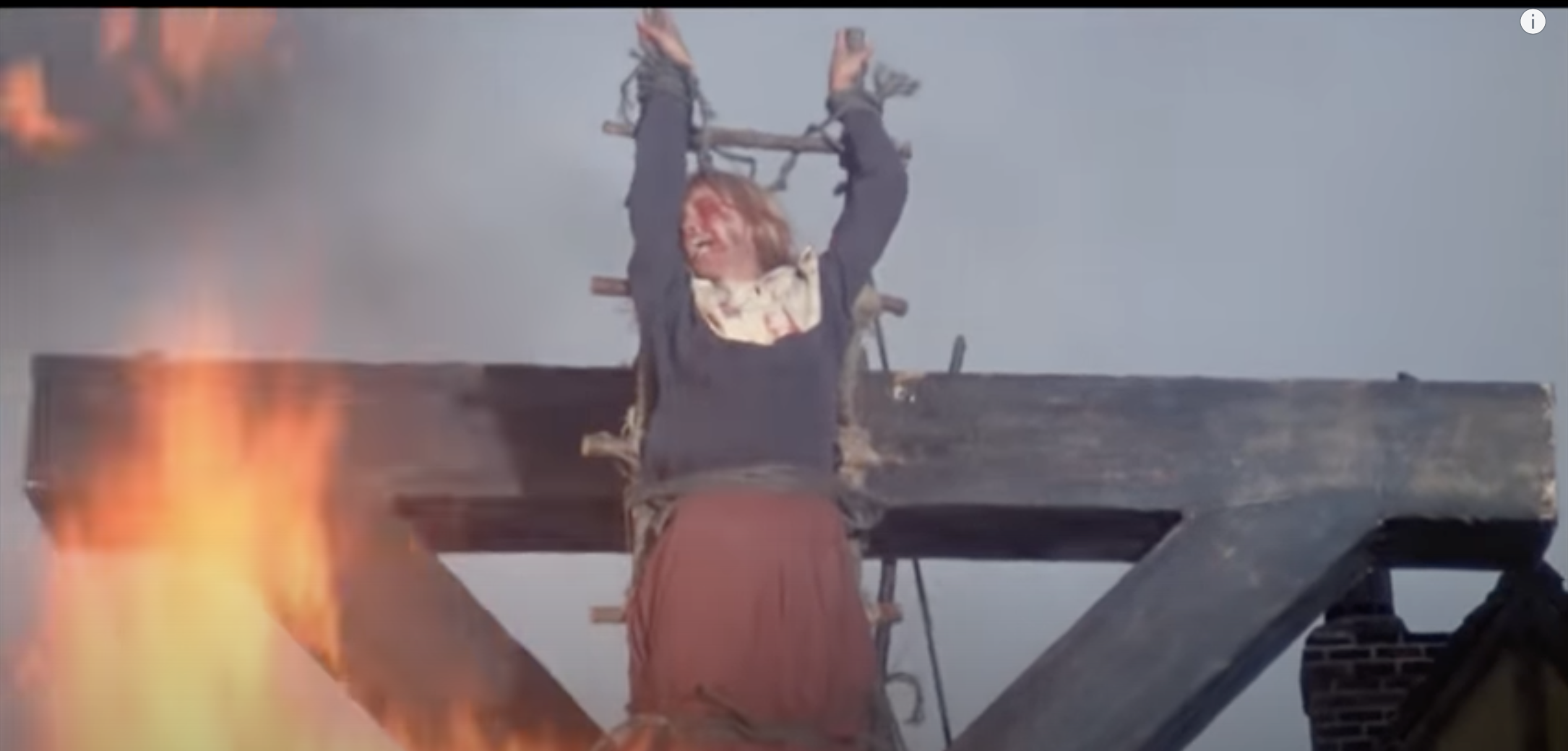
The film makes the most of its economical 86 minutes, and is definitely not for the faint-hearted. By mining British folk culture and history, and by focusing on human evil itself rather than monsters and spirits, Reeves has opened up the possibilities of a whole new kind of horror movie and paved the ground for a new, artistic subgenre; I can’t wait to see what this new pioneer of British cinema will come up with next. Five out of five stars.

by Rosemary Benton
I feel sorry for those who rely entirely on the words of critics to determine whether or not a film is worth seeing. It's so easy to miss out of some of the most absurd and fun movies out there if the viewer approaches them with too analytical a mindset. For instance, those who read The New York Time's review of The Comedy of Terror really missed out on the humor of seeing the iconic actors of horror from the 30s and 40s satirize their own legacies.

In anticipation of the June 24th release of Roger Corman's new movie, The Masque of the Red Death, I dared to take a look at an advanced review of the film from Variety Magazine. Since seeing the film after its premier in Los Angeles, I can sympathize with some of the negative points in the above mentioned article, but it still annoys me that there will be people who will avoid this new Edgar Allan Poe tribute film simply because the Variety review and others seem to be approaching it with a lukewarm reception. Yes, The Masque of the Red Death has its faults, but for a horror movie that takes itself seriously in a time when classic horror themes have become passé, this is a very competently done and memorable movie.

Prince Prospero (Vincent Price) is a malicious yet pragmatic and cuttingly frank man whose province in medieval Italy has all but succumbed to the fictitious disease, the Red Death. Although a proud and evangelical self proclaimed Satanist, the Prince is able to rationalize his beliefs in Satan as an all powerful living God by drawing direct inspiration from the morally dubious nature of humanity and the ever present suffering of the world. Taking a woman named Francesca (Jane Asher) from one of the nearby villages after she pleads for the life of her fiancé and father, Prince Prospero makes it his mission to convert her from a believer in God to a hand maiden of Satan, and consequently a hand maiden to himself as a sort of high priest to Satan.

His harsh lessons ultimately culminate in a grand celebration at his palace where his “friends” and followers within the Italian aristocracy plan to feast and revel in a masquerade. All must dress in any human like garb they wish, but per his orders none are allowed to wear red. When a lone figure arrives in towering red robes, Prince Prospero angrily pursues him. The intruder is nothing that he expected, however, and bears a message that he is horrified to hear.

Roger Corman has drawn inspiration from the dark elegance of Edgar Allan Poe's bibliography for years now. Since his production and direction of the 1960 gothic horror film House of Usher, Corman has had at least one Poe-themed film released every year, all of which have been financial successes, if not necessarily critically received. In The Masque of the Red Death Corman once again captures the grandiosity and bleak horror of Poe's writing with the aid of his favorite go-to villainous gentleman, Vincent Price.

The Masque of the Red Death is unique in Corman's work to date. In the 1950s the young and ambitious schlock producer gained a name for himself by churning out many of the low budget, drive-in titles that we grew up on – The Fast and the Furious (1954), Day the World Ended (1955), and Machine Gun Kelley (1958). Using his growing reputation as a Hollywood force who could corral the crew, shoot a film in as little as five days, and still present a profitable final product, Corman swiftly moved on to producing and directing.

His subject matter has included some very interesting forays into edgier territories within American film since the enforcement of the Hayes Code in 1934. Of particular note I would point to the agency of the female characters in The Wasp Woman (1959), the self-aware satire in A Bucket of Blood (1959), and the rage of white racists against school desegregation in The Intruder (1962). In The Masque of the Red Death the topics of the film's plot are not so much unique as they are distinct for being so well interwoven.
The screenplay is credited to Twilight Zone writer Charles Beaumont and R. Wright Campbell (who wrote the screenplay for the 1957 film Man of A Thousand Faces). Their combined effort added an immense amount of humanity and depth to the original sparseness of Poe’s writing. Although the title clearly states that the movie is an adaptation of Poe's 1842 short story "The Mask of the Red Death: A Fantasy", the film is actually a merger of “Mask” with another Poe short story from 1849 titled, "Hop-Frog; Or, the Eight Chained Ourangoutangs". Given that the story of “Mask” is so sparse in characters outside of the protagonist Prince Prospero and the plague personification in The Red Death, the film was obviously in need of other characters to flesh it out into a feature film. The end result penned by Beaumont and Campbell is so perfect that it could easily be believed that the two stories were originally written as one.

The visuals in Corman’s Poe movies are likewise a stark departure from the static and clunky cinematography of his 1950s productions. Working with cinematographer Nicolas Roag (best known for his work on David Lean's 1962 film Lawrence of Arabia), The Masque of the Red Death kept the sharp colors and excellent sets of Corman’s earlier Poe movies. Roag's artistic eye brought it above and beyond that, however. The movement of the camera and the actors achieves a flowing and poetic feel that is new to Corman’s movies. The scene of The Red Death gliding through the revelers at the climax of the film is particularly gripping, as is the creative decision to have the end credits consist of a red and black dichromatic color scheme with the credits appearing in white around slowly placed tarot cards.

It’s a pleasure to see that as Roger Corman gains momentum in the film world he is readily making use of the network of talent opening up to him. Meanwhile, those he has relied upon for previous projects, particularly Vincent Price and R. Wright Campbell, seem to be flourishing under his more experienced directorship and heavier production budgets. My final thought on the film is that as a long time fan of Vincent Price I was thrilled to see that the poor performance I witnessed from Price in The Last Man on Earth was not indicative of a downward spiral for him. While he looked old and brittle in his role as Dr. Robert Morgan – a lonely, despondent, and disillusioned scientist – Price sprang to full vibrant life in a role that really allowed him to channel his inner devil – that of a swarthy, learned, arrogant, pompous and cruel classic villain. No matter what viewers might hear in the critical response to this film, it is a work that is absolutely worth the cost of admission. Of Corman's current bibliography this is a four and a half out of five stars. If Roger Corman continues to assemble and wield his creative team this well in his future projects then he is going to become a force to be reckoned with.
[Come join us at Portal 55, Galactic Journey's real-time lounge! Talk about your favorite SFF, chat with the Traveler and co., relax, sit a spell…]

by Rosemary Benton
Horror meets SF
As creators and Hollywood producers have found, horror is a versatile complementary genre that has been instrumental to the fear factor within thrillers, the stark human experience in film noir, and the complex depth of character behind a compelling villain. Recently, the genre has been going through a bit of a self-imposed revolution as it moves away from late 1800s and early 1900s stock-stories to pair off with 1950s science fiction literature such as John Wyndham's book The Day of the Triffids. Comedy has increasingly been a partnered with horror, as in The Tingler (1959), the self-aware movie The Comedy of Terrors (January 1964), and the upcoming freaky-family sitcom The Addams Family.
Those who have made a name for themselves as character actors within horror (Boris Karloff, Peter Lorre, Christopher Lee, Bela Lugosi, Peter Cushing, and of course Vincent Price) are more and more finding themselves in roles that are written to be the very embodiments of the characters they were initially typecast as. While they take on these roles with flair and aplomb, seeing them act outside of their comfortable and accommodating niches is an exciting opportunity for their fans. This month the debonair gentleman-villain/tragic aristocrat character actor Vincent Price was given the opportunity to showcase his acting talent in the newly released film, The Last Man on Earth, a film that promised to be a stark departure from his previous roles.

Based on the 1954 novel I Am Legend by Richard Matheson, The Last Man on Earth follows the depressing life of Robert Morgan (played by Vincent Price) after a deadly plague sweeps the planet, turning infected people and animals into shambling, blood thirsty vampire ghouls. Even with the book's heavy reliance on internal dialogue and the writing's somewhat disjointed flow, a brilliant movie adaptation of I Am Legend would be entirely possible in the hands of a succinct screenwriter, a brooding leading actor, and a director capable of bringing severe emotional distress to the screen. Unfortunately, despite the best efforts of the talented team behind Last Man, none of these elements quite linked up with one another. The result is severely disappointing.
What Happened?
Robert Morgan was once a scientist working to find a cure to the plague creeping across the globe. But when the disease took his neighbors, his fellow scientists, then his child and finally his wife, Robert found himself alone with the terrible burden of quite possibly being the last human being alive.

Boarding up his house and festooning it with garlic strands, crosses and mirrors, Robert whiles away his evenings making stakes and farming garlic as the zombie-like vampires beat away at the outside of his house. Alcohol, records, books and home videos are some comfort, but also stand as constant reminders of the civilization he is now bereft of. During the day when the vampires seek shelter from the sun Morgan methodically sweeps the area to hunt them down, stake them, load them into his station wagon and drive the bodies out to an ever burning plague pit.
After three years of this grim routine Robert happens to come across a woman named Ruth Collins (played by Franca Bettoia) who is out walking in the sunlight. He chases her down and brings her back to his home. Robert soon deduces that she is one of the infected, but comes to find out that the vampire disease has been contained with a drug that must be taken regularly lest the victim lose their sanity. She tells him that she was sent to spy on him by order of the new society of vampires she belongs to. The group intends to find a way to take revenge on Robert for killing many of their number as they hid from the sun. She explains to him that he is the new monster in this world, killing during the day while the new norm sleep.
After a short altercation Ruth becomes unconscious. While she is out Robert filters Ruth's blood through his own body via a makeshift dialysis setup, effectively curing her of the vampirism. But Robert's discovery of a cure is too little too late. As Ruth and Robert come to realize the miracle that has taken place a vampire breaks into the house and bites Ruth, effectively ending her brief return to full humanity. Just then black vans full of heavily armed vampires roll up and begin to slaughter the feral ghouls stalking around Robert's property. Their mission is to exterminate Robert, just as he has been doing to any sleeping vampires he has come across. Fleeing the house and running into a church, Robert is pursued and fatally wounded. Spitting venom and insults at the vampires, Robert crumples on the steps to the pulpit and dies as Ruth looks on. The church begins to fill with worshipers as Ruth walks out. She comforts a crying child saying that there is nothing to be afraid of anymore, and then the film fades to black.

What went wrong
To preface my oncoming analysis of The Last Man on Earth, I wholeheartedly believe that a movie adaptation of a book is not obligated to be a carbon copy of its source material. Movies such as Invasion of the Body Snatchers (1956) and The Most Dangerous Game (1932) prove this well, both of which were wonderful films even though the creators took liberties with the characters, scenes, and atmosphere of the literature they were based on. That being said, given what the writers of Last Man chose to keep from Matheson's novel and what they chose to tweak, the movie just doesn't come across as raw, desperate and angry as it should be. The blame lies primarily in the music, and as much as it pains me to say this, in the casting of Vincent Price as Robert Morgan.

Upon hearing the opening trills of the music, heralding the credits to begin rolling onto the screen, I felt something was wrong. The music blares loudly over the words with a cliché cacophony of horns and violin before switching to a melodramatic lilting tune, then back to clashing force full of a powerful energy completely at odds with the fragile looking, depressed Vincent Price mulling around his boarded up home. The musical scoring doesn't get any better from there. At times when the audience is supposed to feel the tedium of Robert Morgan's existence there is music that makes you feel as if his daily routine is full of exciting danger. In actuality it is full of mundane horror as he forces himself awake day after day with only the acts of eating, repairing his home, and exterminating the sleeping vampires (men and women alike) to keep his mind occupied.

Most insultingly the entrance of Franca Bettoia's character brings with it a strange romantic subplot that seems to come out of the blue with little buildup and conflicting sincerity. The interplay between Price and Bettoia takes on a very jarring fast succession of shoulder shaking, menacing staring, hysterics and hugging. During all of this the score flips wildly between lovely crescendos and stricken horns blares and drum rolls to show betrayal and hurt. It's reminiscent of the sweeping operatic film scoring common of old horror films from Universal Pictures, but feels very out of date for a modern movie that is supposed to be seething with barely repressed despair and scant few moments of actual hope.

Finally, the visual reason the film fails to emote properly comes to rest on the unfortunately sub-par performance of Vincent Price. For a character who is fast coming to believe that he is the last uninfected human on Earth, Price plays the role of Robert Morgan with too much restraint. Robert Morgan is a man with a young family taken by the plague and who lived to see his wife and neighbors come after him from beyond the grave. Such a character should be deeply shaken and depressed as he goes through his remaining days with monotony and acceptance of a life alongside the undead.
Price, however, carries himself like someone who is physically fragile and emotionally cold. His rounded back and stiff-armed walk speak of a man afraid he might break a bone if he moves with more than a shuffle, as opposed to a barely middle-aged man with a heavy burden on his shoulders but a determination to survive. His emotional connection to the other characters in the story seems very distant as well. One could argue that this was a fault of the script, but when the audience sees him chasing the van carrying his still living daughter to the plague pit to be burned, Price is turned away from her body with little effort. He barely struggles at all, and walks away in a daze too easily for a man supposed to be a hysterical, grieving father.

At one point in the story Price's character encounters a ragged dog out in the daylight. His disappointment at learning that a wounded animal he brings home with him is infected is minimal, and in the next scene we see him burying a small bundle with a stake in it. There is little remorse in his posture or expression, even though he is burying the first living creature he has had contact with in three years (before he meets Ruth). Vincent Price just can't do desperation. He can emote long suffering sadness well as is evident in the scene when he visits his wife's tomb and when he is watching home movies and begins to laugh before breaking down into tears, but he just can't seem to nail down what it must be like for a character as raw, desperate and hungry for social contact as Robert Morgan.

The verdict
Sadly, this particular movie is only worthy of a two and a half star rating.
In terms of its competence as a whole, The Last Man on Earth is a solid enough science-fiction/horror movie from directors Sidney Salkow and Ubaldo Ragona, and will likely please the casual movie goer looking for a darker story. But given the material it had to work with in I Am Legend, the movie feels flat. Some films are better when you have read the novel beforehand, but this is not one of them. For those who are die hard fans of Vincent Price I would also avoid seeing this movie as it is hardly his best performance. Instead save your money for the upcoming Roger Corman film The Mask of the Red Death in June.
[Come join us at Portal 55, Galactic Journey's real-time lounge! Talk about your favorite SFF, chat with the Traveler and co., relax, sit a spell…]

by Rosemary Benton
It feels as though, no sooner had the curtain fell and the lights came up on February's horror/fantasy gem, The Raven, that the film reel snapped to life with another genre-crossing macabre film. While last month's movie was a light, dry and sardonic comedy with a vaguely medieval setting and a cast of horror movie icons, Diary of a Madman, steps forward with a much more sobering aesthetic.
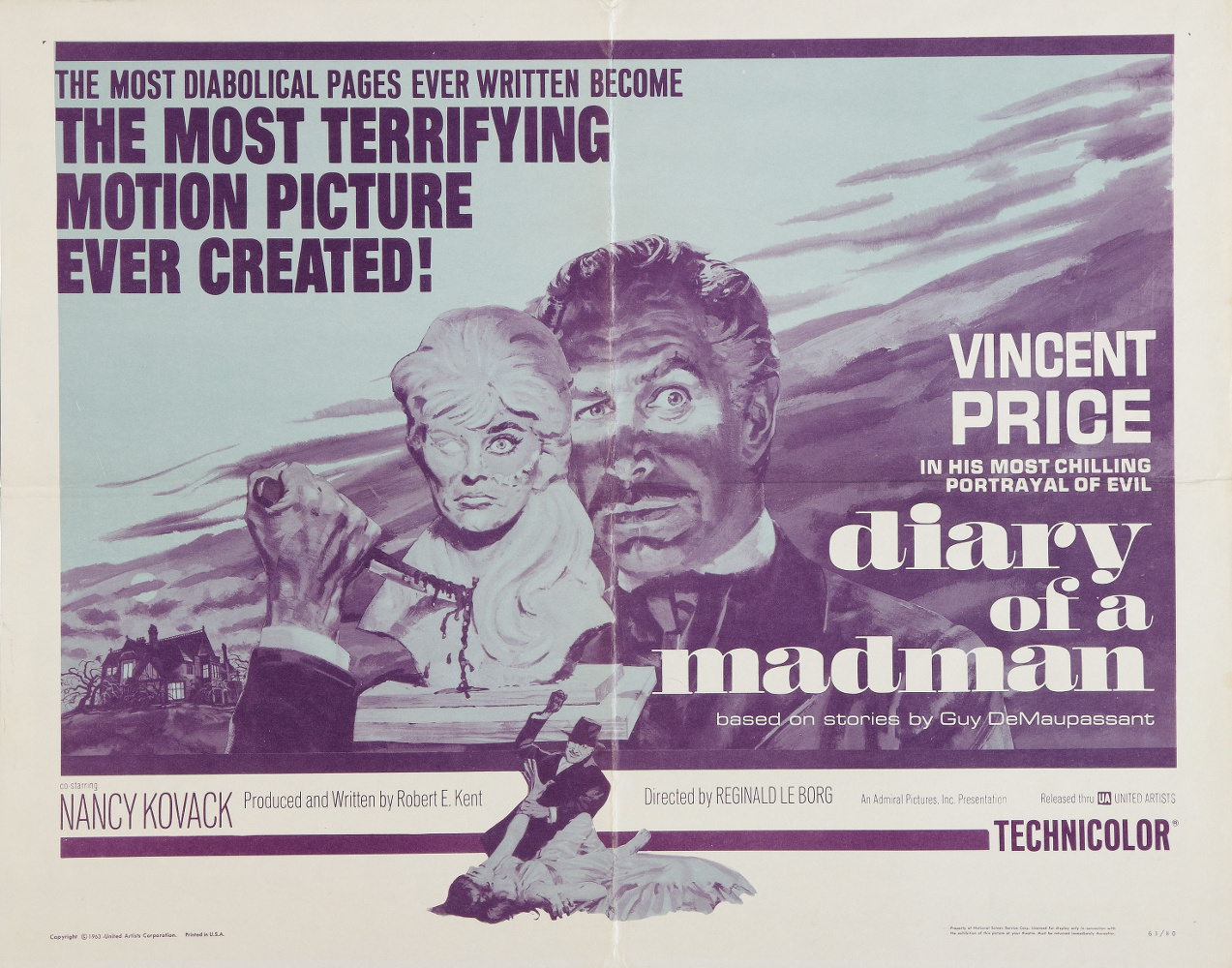
In my efforts to reengage with modern science fiction after a long break, Diary of a Madman, a loose reimagining of the 1887 horror/science-fiction short story by French author Guy de Maupassant entitled“The Horla," is a fitting film to follow last month's choice.
Producer and screenplay writer, Robert Kent, starts the movie off with a view of a crowded cemetery during a Catholic funeral. The recently deceased body of Vincent Price's character, Magistrate Simon Cordier, is blessed and then lowered into the ground. Given the faces and impatience of the guests, the audience can surmise that there was a lot of unfinished business left following Cordier's passing.
At the behest of Cordier prior to his premature death, his private diary is read aloud before a small group of funeral attendees immediately after the graveside ceremony. From here the origin of Cordier's madness at the hands of an invisible being named the Horla is made known. Ultimately Cordier implores the audience of his faithful servants, colleagues and friends to heed his death as a warning, and to act now to learn more and defend against other such beings that may exist out there in the wider world.
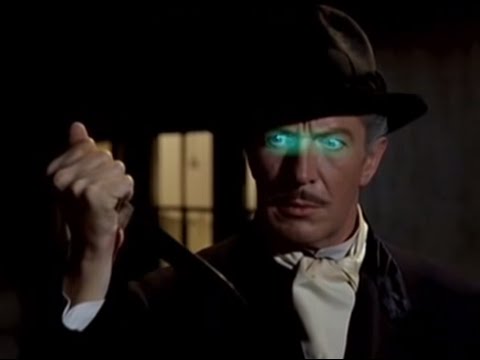
It is completely understandable why Robert Kent needed to take liberal creative license with the story of Cordier and the Horla that held his mind captive. Within the original 1887 short story, there is very little dialogue or many coherent lengthy scenes which could be considered prime material for a theatrical performance. Often, Guy de Maupassant allows his protagonist to go on at length, as one would in a diary, about tangential thoughts, theories and philosophies. It's interesting and works beautifully as a train-of-thought discourse regarding the protagonist's fear of going insane.
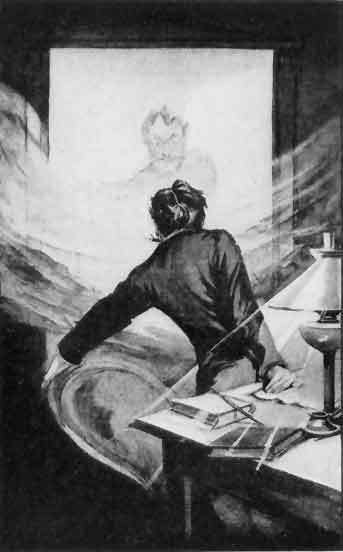
But where Guy de Maupassant can go on for pages about the building fear felt in the physical manifestations of the Horla's power, Vincent Price must convey the same screaming terror in a few seconds with looks and posture alone. It's reasonable, therefore, that a more fleshed out story would have to be developed in place of the internal monologues of a seemingly schedule-less upperclass gentleman going about his daily life on his estate. Enter the married model whose bust Cordier sculpts, the jealous husband of said model, the threat of public scandal should the magistrate run off with such a lower class woman, and on top of all this, the masterminding, murderous, shapeless entity determined to use Cordier for some unknown, evil end.
The casting of the ever popular Vincent Price as the lead makes sense in terms of marketing, but I have to unfortunately pan his acting in this movie. Price has been incredibly prolific recently, starring in eleven movies between 1960's House of Usher and this, the year's second Price film. He's cultivated an image that works very well with classy Victorian gentlemen in horror melodramas, and odd, but charming characters in action movies. However, the role of Simon Cordier would have been much better suited to an actor with… dare I say… more range.
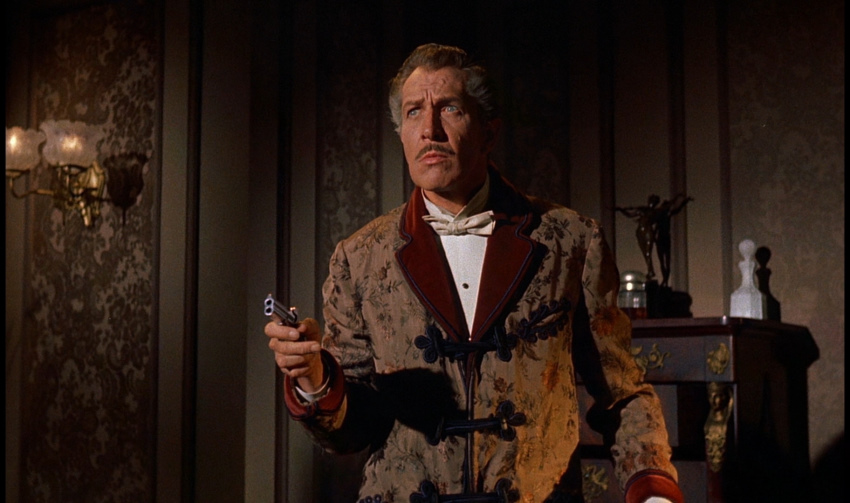
The heart and intensity of Guy de Maupassant's protagonist lie in the whiplash emotions that crack back and forth in his mind. He is written as a highly emotive character who is often taken aback at the inexplicable things he is being forced to feel due to the influence of the Horla. When one looks at the face of Vincent Price during scenes such as the floating rose or the breaking of the Horla's spell upon the sight of a cross, you see concern, confusion and shock, but not the true, deep down, freezing cold animal fear that Guy de Maupassant describes.
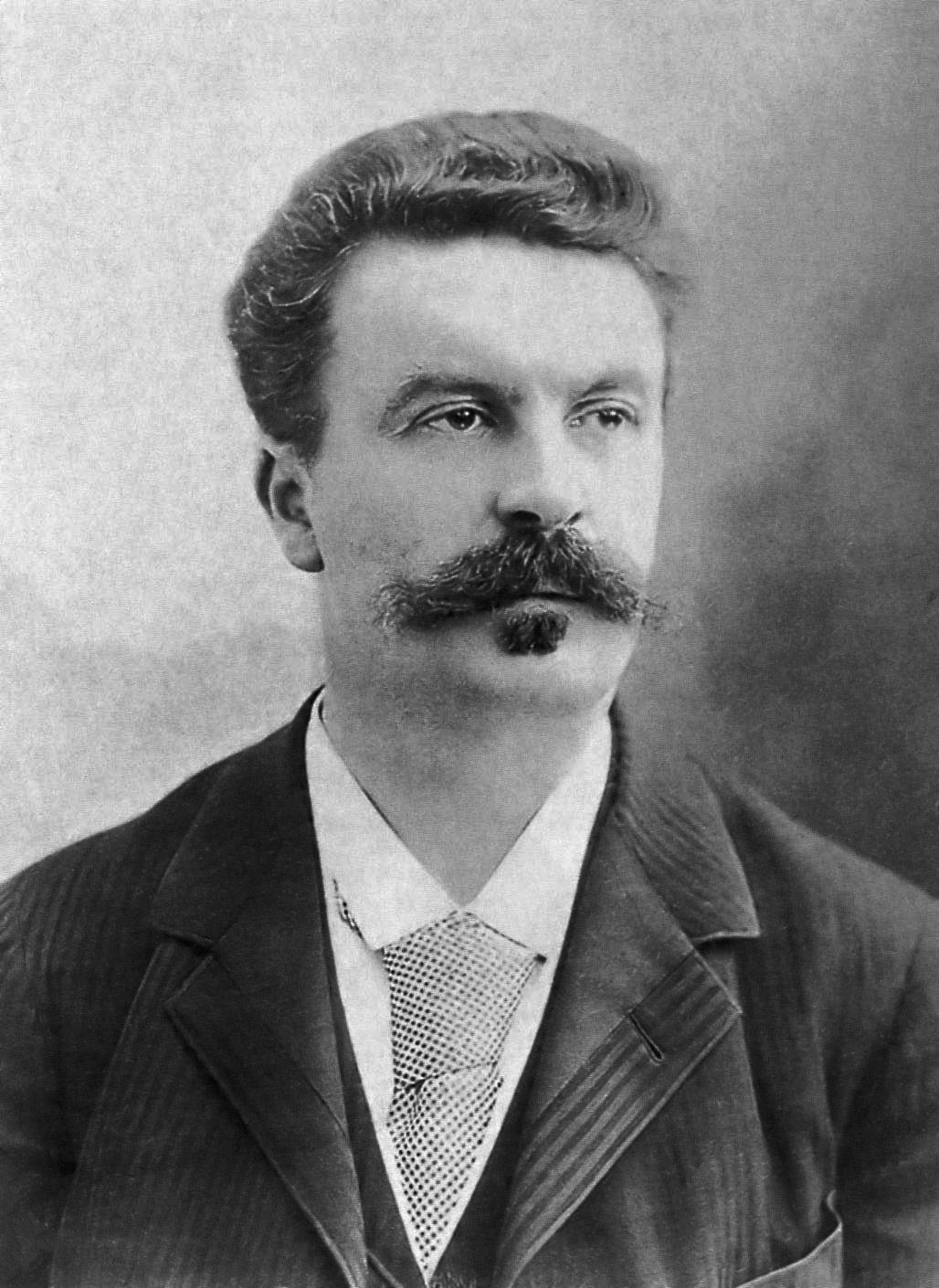
Thankfully there is a saving talent in the form of the lovely Nancy Kovack. Where Price falls short in the expression of an emotionally manipulated person, Kovack shines bright as a character who is a skillful, emotive manipulator. The real reason to become invested in the plot of Diary of a Madman has to be, hands down, Kovack's character, Odette Mallotte DuClasse. With her wide range of expressions and a deeply personal performance, Kovack gives Odette a painful and human background. A character that would be otherwise cookie-cutter cliché came to life via her acting talent.
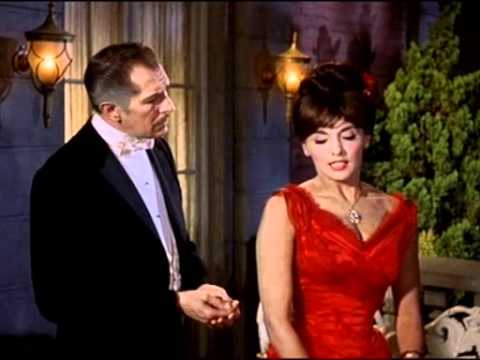
Where other actresses would play Odette simply as a two timing gold digger, Kovack gives her an evolution that leads up to her resigned, angry admission of marrying Magistrate Cordier for his money. First, she in entrepreneurial in selling her services as a model within an art gallery displaying paintings for which she has sat. Then, she is knowledgable about portraiture and offers suggestions for how Cordier could sculpt her. She is a confident negotiator who pushes Cordier hard to continue employing her as a model for future projects. For the money she could bring into her starving-artist household she is flirtatiously willing to entertain the proposition of being a companion to Cordier, but it is the scene wherein Cordier proposes marriage that Kovack reveals her character's complexity. Within half a second, and with at least three versions of surprise and uncertainty, Kovack shows shock rather than devious glee at the offer. She quickly recovers and hides her disbelief, but for disbelief to be there in the first part is due undoubtedly to Kovack's full understanding of her character's situation.
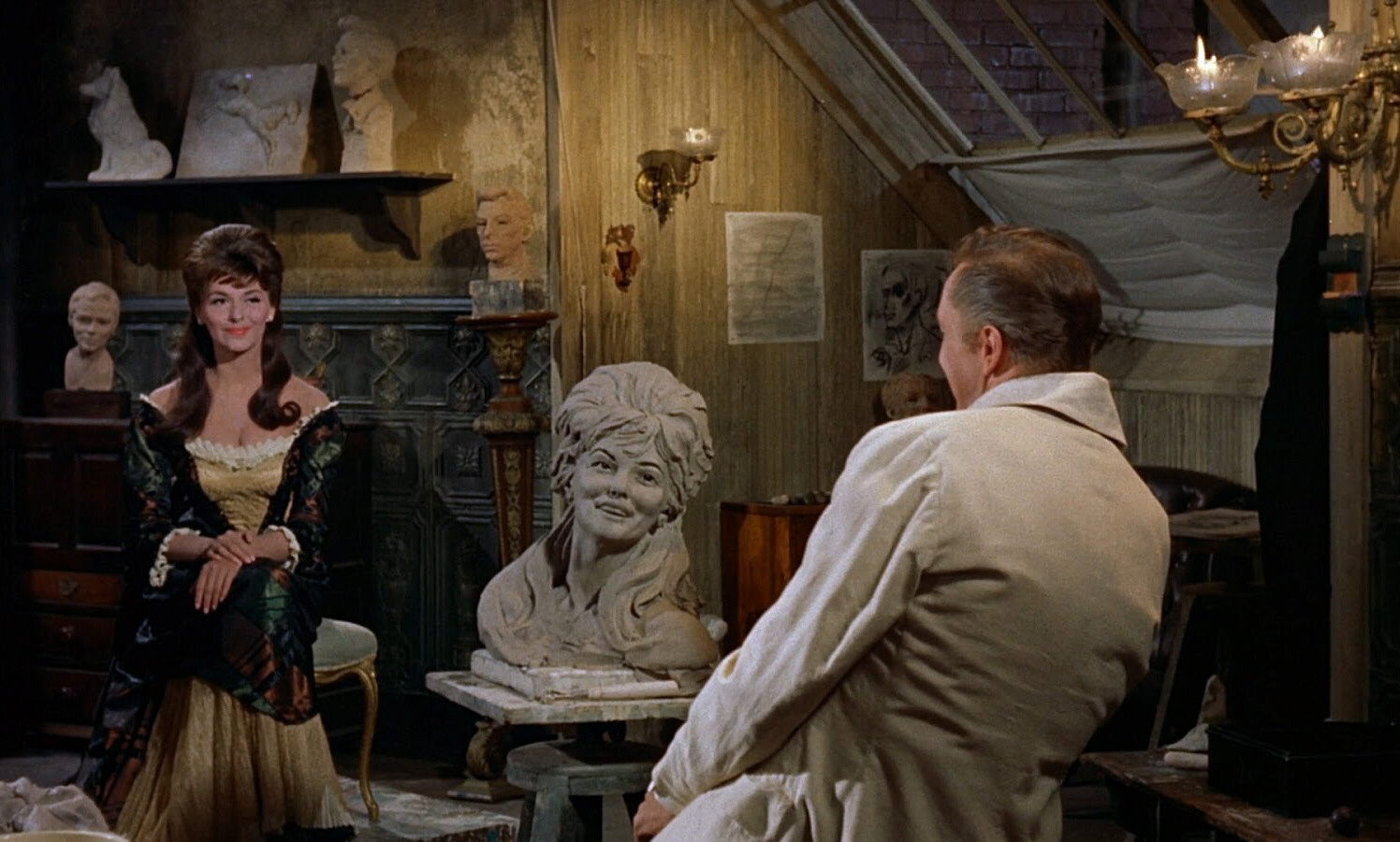
All in all, I have to give Robert Kent credit for the interesting story of love and murder that he merges with a select few scenes from the original Guy de Maupassant story. Under the direction of Universal Studios veteran Reginald Le Borg I believe that each actor played to their strengths in Diary of a Madman, although some shone more brightly others. If one is already familiar with “The Horla," I believe they will be more amused than joyous at the adaptation. But given the unique source material I would recommend that anyone should give Diary of a Madman a chance. You may not leave as terrified of the unknown as you would have been reading “The Horla," but at least you can enjoy the performance of Nancy Kovack. In summation I would give Diary of a Madman a lukewarm three and a half stars out of five.
[P.S. If you registered for WorldCon this year, please consider nominating Galactic Journey for the "Best Fanzine" Hugo. Your ballot should have arrived by now…]
[It is with great pleasure that I welcome back the Journey's first Fellow Traveler, Rose Benton, who was gone on an unfortunate hiatus caused by Mundac, destroyer of All That Which is Pleasurable. As you will see, she has not lost one whit of her touch…]

by Rosemary Benton
To come back to the science fiction genre after taking such a long break is not unlike a science fiction story itself.
Returning to her home world, the protagonist finds herself displaced as a citizen in a country she only vaguely recognizes. Undeterred, she resolves to integrate with this bizarre, new adaptation of her homeland. To begin assimilation she must start with something familiar which she can grasp onto.
For me that familiar reentry into science fiction comes via horror movies.
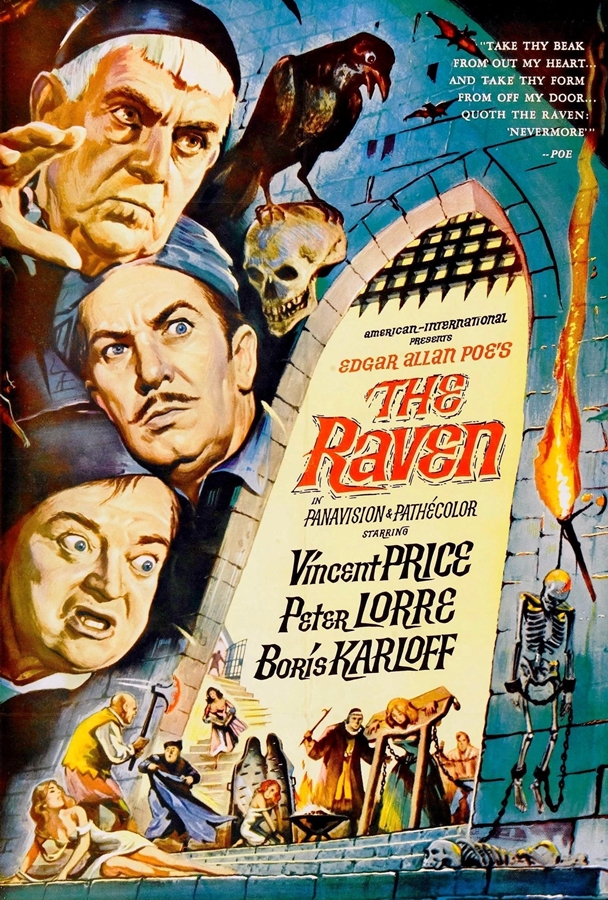
I would go so far as to argue that much of what has shaped the genre of science fiction in film stems from the cinematic roots science fiction and horror share. It has not been uncommon over the last decade to see directors, producers and actors of horror dabble in science fiction, or vice versa. As such, upon realizing that director Roger Corman had released another film last month I put it on my short-list of entertainment priorities.
The Raven hit theaters last month not so much to terrify audiences, but to reel them in with a star studded cast and a light, Edgar Allan Poe-flavored, fantasy comedy story. Starring Vincent Price, Boris Karloff, Peter Lorre and Hazel Court, the film is very loosely based around the narrative Edgar Allan Poe poem by the same name. By this I mean that Hazel Court is, of course, the sassy and longed-for Lenore, and Vincent Price quotes segments of the poem. There the similarities end.
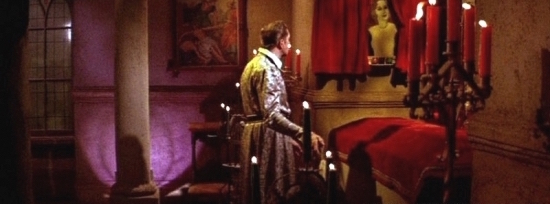
The plot itself is a hilarious melodrama featuring magicians, “diabolical mind control,” and betrayal. Doctor Erasmus Craven (Vincent Price), the overly polite son of the late Grand Master of the Brotherhood of Magicians, is interrupted one evening by a raven tapping at his window. The raven, it turns out, is actually another magician named Doctor Bedlo (Peter Lorre), who was put under a spell by the current Grand Master, Doctor Scarabus (Boris Karloff). Initially Dr. Craven is hesitant to accompany the vengeful Dr. Bedlo back to Dr. Scarabus' castle, but after Dr. Bedlo tells Dr. Craven that his dearly departed wife, Lenore (Hazel Court), may be stuck at the Grand Master's castle as an enslaved spirit, both magicians set out to confront him. They are accompanied by Dr. Craven's daughter, Estelle (Olive Dora Sturgess), and Dr. Bedlo's son, Rexford (Jack Nicholson).
Greeted by a surprisingly hospitable Dr. Scarabus, Dr. Craven, Rexford and Estelle are lulled into a false sense of security before being imprisoned in Dr. Scarabus' dungeon. The treacherous Dr. Bedlo, who was promised power in exchange for luring Dr. Craven to him, is likewise thrown in the dungeon. The very much alive Lenore then appears to taunt Dr. Craven, confessing to having killed someone else and placing their body in the casket. After nearly escaping, Dr. Craven and Dr. Scarabus decide to resolve their conflict with a duel of magic. The winner absorbs the other's power, causing the loser's control of magic to be unreliable for the rest of their lives. A lengthy, whimsical battle replete with fun special effects ensues, but ultimately our heroes are victorious. Lenore futilely implores Dr. Craven to take her back, claiming ineffectively that she was under Dr. Scarabus' mind control. As the castle burns in the background they return home, Dr. Craven now all the more powerful, Estelle and Rexford are besotted with one another, and Dr. Bedlo is stuck as a raven indefinitely. The immoral Dr. Scarabus and Lenore survive as well, but are now without a home or magic.
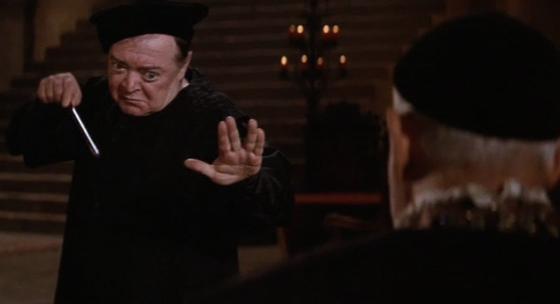
While still best known for his role as the monster in the Universal Pictures Frankenstein movies (or rather, his pre-Hayes Code work in general), Karloff gave a very solid performance that was both charming with a sinister undercurrent. I was very much convinced that his character, Dr. Scarabus, was a charismatic master manipulator who could realistically have backstabbed and coerced his way up the ranks of the Brotherhood of Magic. Where as Vincent Price does most of his acting through facial expressions and Peter Lorre's strengths lie in applying various degrees of bluster, slight effeminateness, and weaselly demeanor to his roles, Boris Karloff performs his lines with smooth rehearsed precision.

Although the draw for The Raven is obviously its cast and its versatile director, the real reason I would encourage anyone to pay the $0.86 for admission is the odd combination of The Raven's quirky setting and comical deadpan dialogue. Not since he was in Frankenstein has Boris Karloff acted in such an strangely pieced-together beast. It was billed as a horror movie with the tag line, “The Macabre Masterpiece of Terror,” it thanks to what was undoubtedly ad libbing by Price and Lorre, it unquestionably took on an awkward but funny tone.
No one is going to fault The Raven for being a boring movie, but will it be remembered as a well developed story? Probably not. Will it be remembered for its odd fantasy/comedy/horror angle? Definitely. A spontaneous and fun fantasy/drama in the guise of a horror movie, The Raven was well worth the ticket price even if it was a rather silly way to begin the process of reacquainting myself with my long lost science fiction.
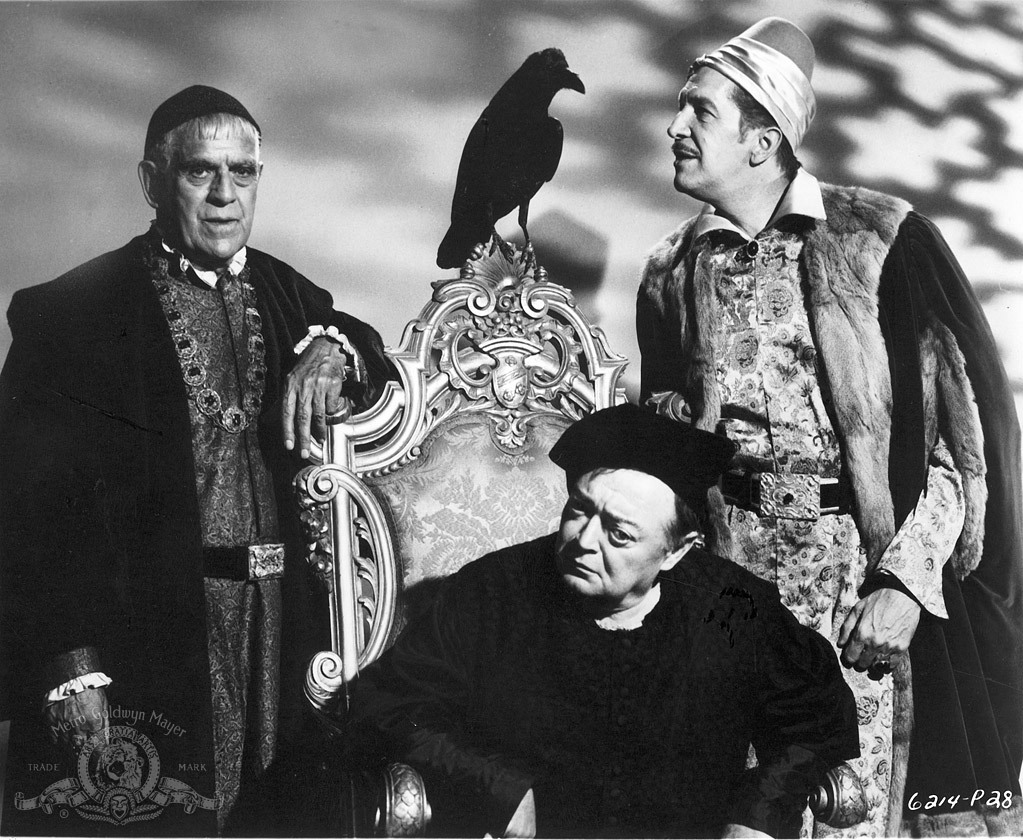
[P.S. If you registered for WorldCon this year, please consider nominating Galactic Journey for the "Best Fanzine" Hugo. Your ballot should have arrived by now…]

Every once in a while, my faith is restored in Hollywood, and I remember why I sit through the schlock to get to the gold.
My daughter and I sat through 90 minutes of the execrable, so bad it's bad Konga because we had been lured in by the exciting posters for Master of the World. It promised to be a sumptuous Jules Verne classic a la Journey to the Center of the Earth, and it starred the inimitable Vincent Price to boot.
It was worth the wait–the movie is an absolute delight.
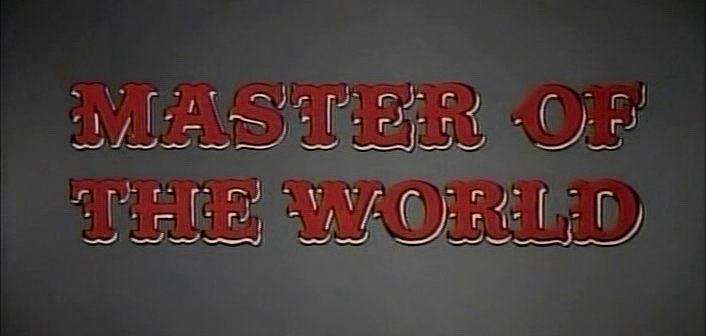
The year is 1868, and a team of intrepid adventurers takes off in a steam-powered balloon to investigate what appears to be a volcanic eruption in the midst of Pennsylvania. They include the doddering but genuinely humorous arms maker, Mr. Prudent, his lively daughter, Dorothy, her outwardly chivalrous but really quite petty fiance, Philip Evans, and the enigmatic yet utterly capable government agent, John Strock.
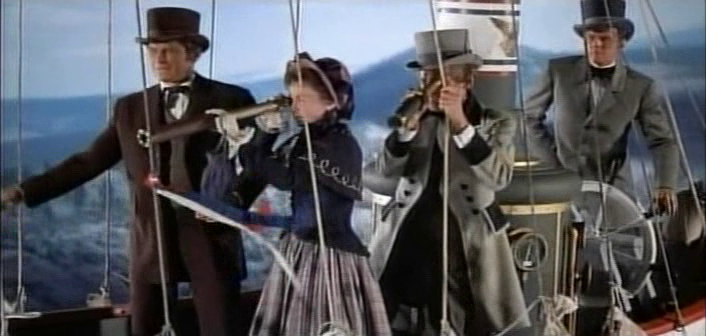
As it crests the crater of the Mid-Atlantic's newest volcanic crater, the balloon is shot down by a stream of missiles. When the aeronauts awake, they find themselves on a tremendous flying ship, part helicopter and part battleship. It is captained by the fearsome Robur (Price) festooned with shaggy facial hair appliques. The skipper's goal is mad yet laudable: to end war on Earth by destroying each nation's ability to make war. With the captured Pennsylvanians in tow, Robur launches a crusade of terror against the navies and armies of the world. Can this madman be stopped? You'll have to watch to the end to find out!



It is an amibitious movie for American International Pictures, an attempt at an epic from a studio better known for it's "B"-level drive-in fare. It very well could have been a classic-based dud like last year's The Lost World. Certainly, the special effects are nothing special–primarily rather limp model-work, back-projection, and liberal use of stock footage.
And yet…
The script is by Richard Matheson, possibly the best fantasy/science fiction screenwriter in the business. The performances turned out by the five stars are excellent. Price's Robur conveys single-minded fanaticism sublty tinged with resignation and regret. Here is a villain one can sympathize with, even admire, despite the insanity of his vision. Henry Hull's Prudent captures the archaicisms of early 19th Century speech and manners. The clear attraction between Dorothy Prudent (Mary Webster) and John Strock (Charles Bronson), much to the dismay of Mr. Evans (David Frankham), is convincing.
Moreover, there is a consistent tone and pacing to the movie. It is never dull. The story twists and turns such that you are never certain what will happen next. It is fun in an over-the-top way that mitigates the enormity of Robur's actions, making them watchable rather than sickening. The humor is intentionally funny. The action scenes are exciting. The doffing of shirts by the ship's muscular crew mid-way through the film is inexplicable, but not unwelcome (for at least half of the audience).
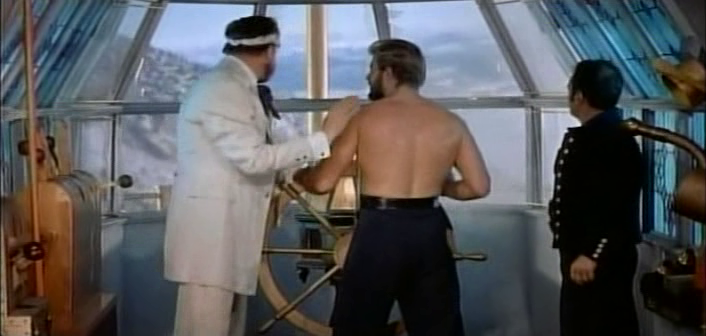
And in the end, it is both satisfying and touching. More, please.
Four stars.